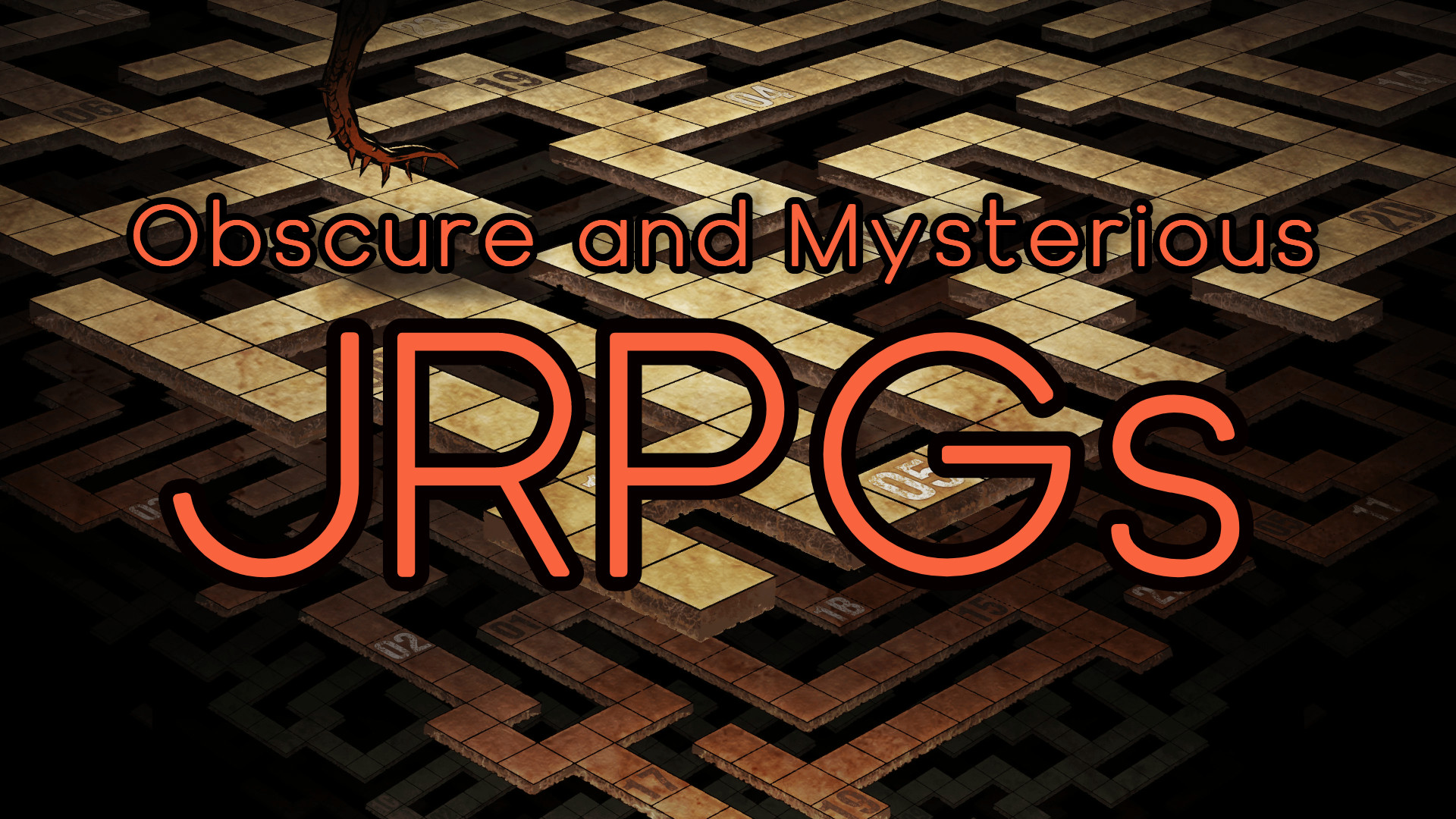
Final Fantasy, Persona, Dragon Quest, Xenoblade, Tales of… whatever. There is no shortage of big-name JRPGs, and the genre has never been more popular. Pokémon games still break records even when they’re terrible. The Yakuza franchise pivoted away from beat ”em-up gameplay and embraced turn-based JRPG strategy.
New franchises like Octopath Traveler emerged successfully, and former Japanese exclusives like Trials of Mana or Live A Live were remade with late localization. It is safe to say that the genre is thriving. Even now, most retro classics like Xenogears and the first three Wild Arms are available on PSN. Long-time fans and newcomers have a lot to choose from, but what about those who desire something more mysterious?
Sure, most casual gamers will go for what is more accessible, because why not? If it’s easy to access, it must be good, right? There are a ton of elusive and intriguing JRPGs out there. Some are stuck on one console, and some have never been translated. Other times, it is just a matter of being forgotten. Sometimes they don’t emulate well, and other times they cost an absurd amount of money in the second-hand market.
Once again, with our team of scientists, we have been able to assess 20 obscure JRPGs. Maybe you’ve heard of some of these. Maybe you haven’t. At least a few are guaranteed to pique any JRPG fan’s interest:
Treasure Hunter G (Super Famicom)

Sting Entertainment may not be the same anymore, but they had a very creative approach when it came to their RPGs in the 90s and early 2000s. Most US gamers would recognize their work on the Dreamcast, where they developed three RPGs for the console: Time Stalkers and two Evolution games. However, perhaps their most interesting game was Treasure Hunter G on the Super Famicom.
The PlayStation was already available when Treasure Hunter G debuted, and Final Fantasy VII was only a year away from release. Being such a late-generation Super Famicom game meant that Sting took full advantage of what the hardware could do, and the results speak for themselves.
Treasure Hunter G looks awesome. It utilizes prerendered 3D sprites for the characters and background elements. It’s essentially like the Donkey Kong Country of JRPGs. This technique allowed the artists to create characters in eight directions, as opposed to the standard four. It’s a very rich and textured-looking 16-bit RPG that could easily be mistaken for a CD-based game.
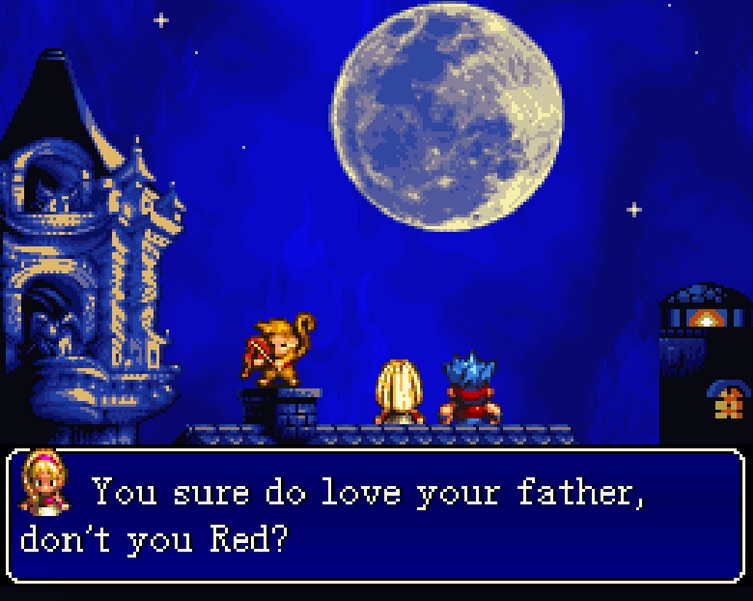
Treasure Hunter G‘s presentation may be leagues ahead of what was on the Super Famicom/Super Nintendo Entertainment System, but it tells a very simple and light story about two brothers on a quest to thwart a generic villain who is trying to summon a skeletal dinosaur. There is also a monkey in it, further reinforcing the Donkey Kong Country connection.
It has a very basic plot, likely aimed at young early readers. Anyone who grew up with Treasure Hunter G would undoubtedly have an emotional connection to the game. The visuals and music are stellar, and the turn-based gameplay is easy to pick up and fast-paced.
During combat, gameplay shifts to the field, and movement becomes tile-based on a grid. Moving around the grid and performing actions costs action points. The brothers, Red and Blue, can cast magic or lay traps, but regardless of the action, it’s always important to keep an eye on the enemy’s actions as well.

It is no surprise why Treasure Hunter G became an obscure JRPG. It’s a late-gen Super Famicom game that would require costly localization on a console that was on its way out. It did get a Virtual Console release on the Japanese Wii eShopbut that has long since closed. Not that it would matter anyway since it has never been given an official localization.
Interested gamers can readily access the fan-translated version of Treasure Hunter G, which appears to be very faithful. Unless a late localization is announced or some kind of remake with a worldwide release occurs, there won’t be other options.
Treasure of the Rudra (Super Famicom)
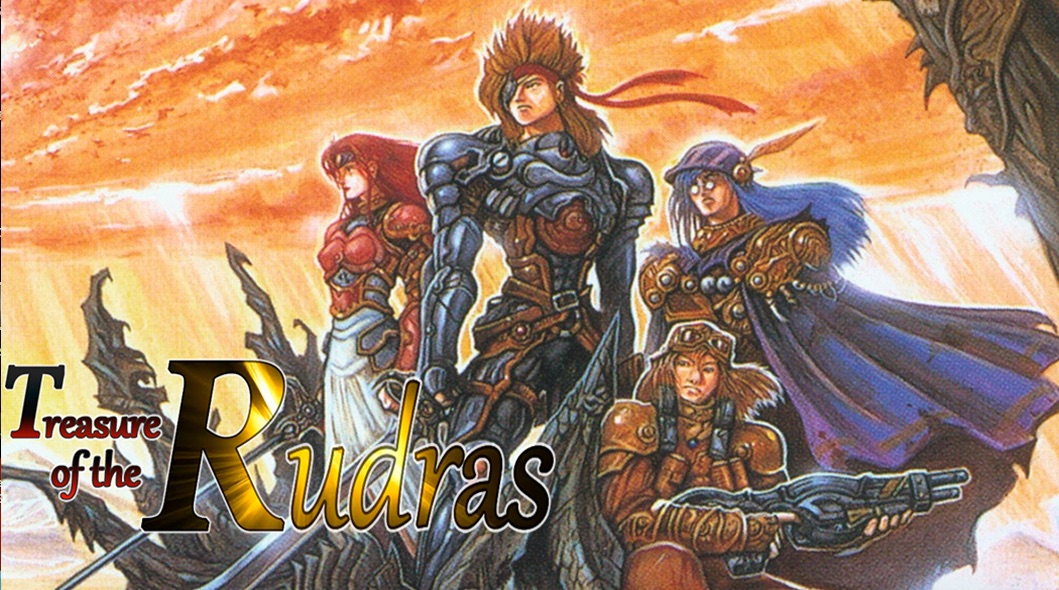
Treasure of the Rudras is what you get when Squaresoft wanted so desperately to toy with the conventions of what makes Final Fantasy tick. Imagine the transgressive and deconstructionism of Final Fantasy VII, but in 16-bit and with a heavy dose of Hindu spiritualism.
The story revolves around a 4,000-year extinction event cycle. When the game begins, humanity is on the brink of experiencing its doomsday, with only two weeks remaining before the cycle resets. At the heart of the narrative are four protagonists, each with their own goals, who become entangled in uncovering the cause of the impending armageddon.
Much like in Final Fantasy, the quest centers on defying fate and forging one’s destiny. Treasure of the Rudras almost feels like it could have been an alternate dimension’s version of Final Fantasy VI, as both games explore similar themes, atmospheres, and tones.
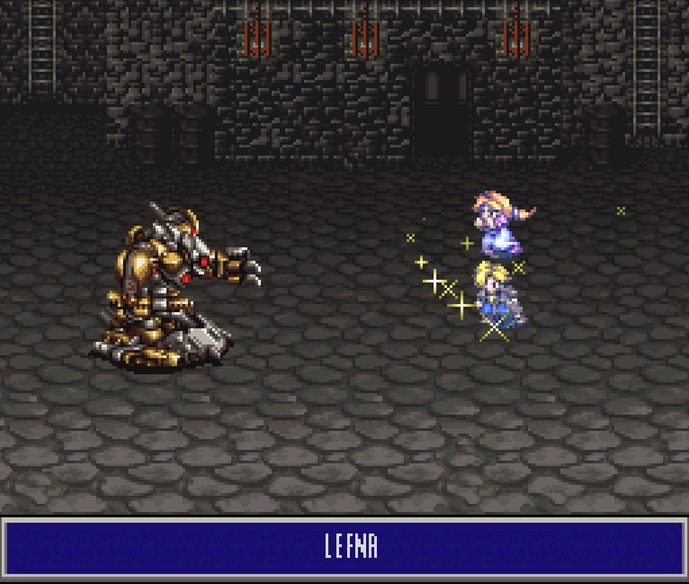
Similar to Treasure Hunter G, Treasure of the Rudras stands as a high watermark for pixel art on the Super Famicom. Although it doesn’t employ prerendered sprites, it bears a resemblance to a more refined version of Final Fantasy VI. Character sprites exhibit greater expressiveness and do not adhere to a template. The backgrounds, in particular, are remarkably vivid and play with perspective to convey a grander sense of the world’s scale.
The gameplay is akin to that of most 16-bit JRPGs, but it features a unique magic system based on combining words to cast spells. This aspect proved to be a significant reason why Treasure of the Rudras was never localized. It didn’t help that it was a late Super Famicom JRPG, and localization would have been prohibitively expensive because of the word system that was originally designed to use only Japanese characters.
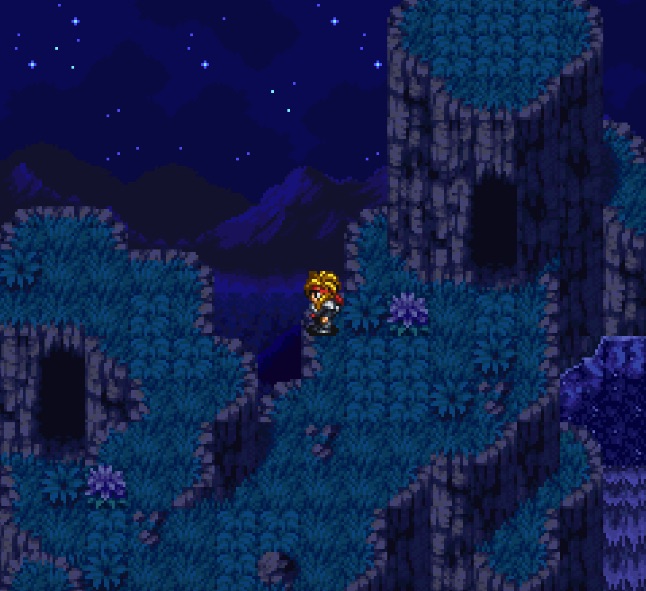
The fan translation was a complex and challenging endeavor. It’s no wonder Squaresoft didn’t attempt to localize it in the 90s, especially since the Super Nintendo Entertainment System was nearing the end of its lifespan. Squaresoft had already committed to developing games for the PlayStation, making it unlikely that Treasure of the Rudras would ever see an official localization unless it was remade like Live A Live.
Secret of Evermore (Super Nintendo Entertainment System)

Secret of Evermore is an unusual game for Squaresoft. It was the first and only game produced under their American studio and even though it was developed by an American staff, it still manages to have Square’s distinct flavor. Immediately, this game left an impression on young gamers thanks to its striking box art, mysterious title, and haunting TV commercial.
It traded fantasy settings for pulpy Americana. The protagonist is a plucky boy who grew up watching B-movies, and like most kids in the 80s and 90s, had his entire worldview shaped by the media he consumed. He bears a resemblance to Marty McFly and becomes entangled in nefarious shenanigans, resulting in his dog transforming depending on the era he visits within Evermore.
Secret of Evermore‘s story unfolds at a breakneck pace and is filled with entertaining interactions. The tone shifts from amusing hijinks to featuring bizarrely nightmarish-looking monsters and creatures that threaten to kill the boy and his dog.

The sprites are also very lively and expressive. The graphics are a mix of prerendered sprites and traditionally drawn pixel art. The effect is marvelous and thanks to careful use of colors and design, there is never a moment when the graphics clash. Secret of Evermore doesn’t look like a Squaresoft game, it more closely resembles the kinds of games that LucasArts was putting out in the 90s.
The music is also far more moody and emotional than fans would expect from an uppity adventure. Compositions are sometimes very wistful and downright moving at times. It shouldn’t be a surprise that the music is excellent because it was performed by Jeremy Soule of The Elder Scrolls fame.
There is an otherworldly darkness and surreal aspect to Secret of Evermore. It is inexplainable but anyone who plays it will know what this means. While it does not resemble the kinds of games Squaresoft was producing at the time, it certainly does play a lot like them.
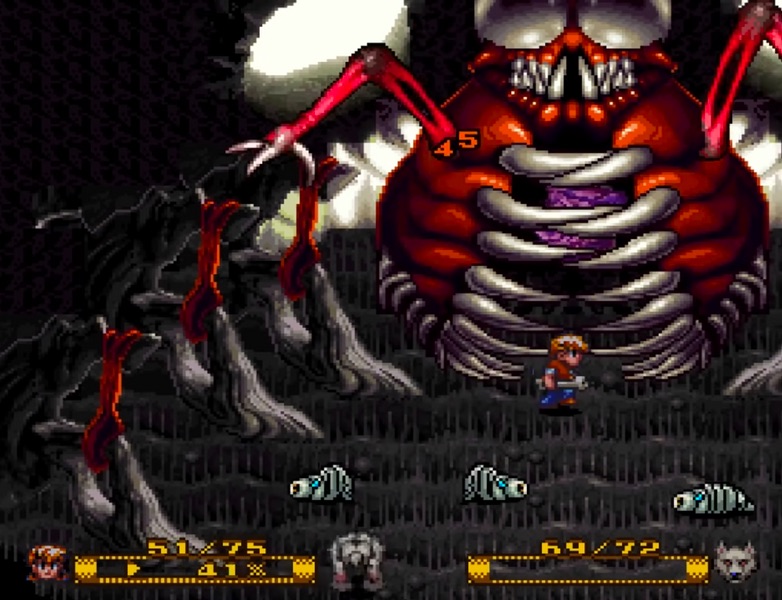
The gameplay in Secret of Evermore is similar to that seen in Secret of Mana. Both games are played from an overhead POV and the primary mode of combat is melee weapons. Evermore’s hit detection can be a little spotty, but the game is hardly unplayable.
What separates Evermore from Mana is how it approaches magic. The boy isn’t a mage- at best he can concoct different consumables through alchemy… a technique he picked up from his chemistry class. Players have to collect different items to combine to make these consumable spells and if you know the combos, it can be easier to make more powerful items.
For whatever reason, Secret of Evermore was doomed to obscurity and Squaresoft shuttered the branch that made it. It was never rereleased and has hardly ever been acknowledged. Gamers who want to experience it have only two options; finding an original copy or sailing the sloppy seas.
El Dorado Gate (Dreamcast)
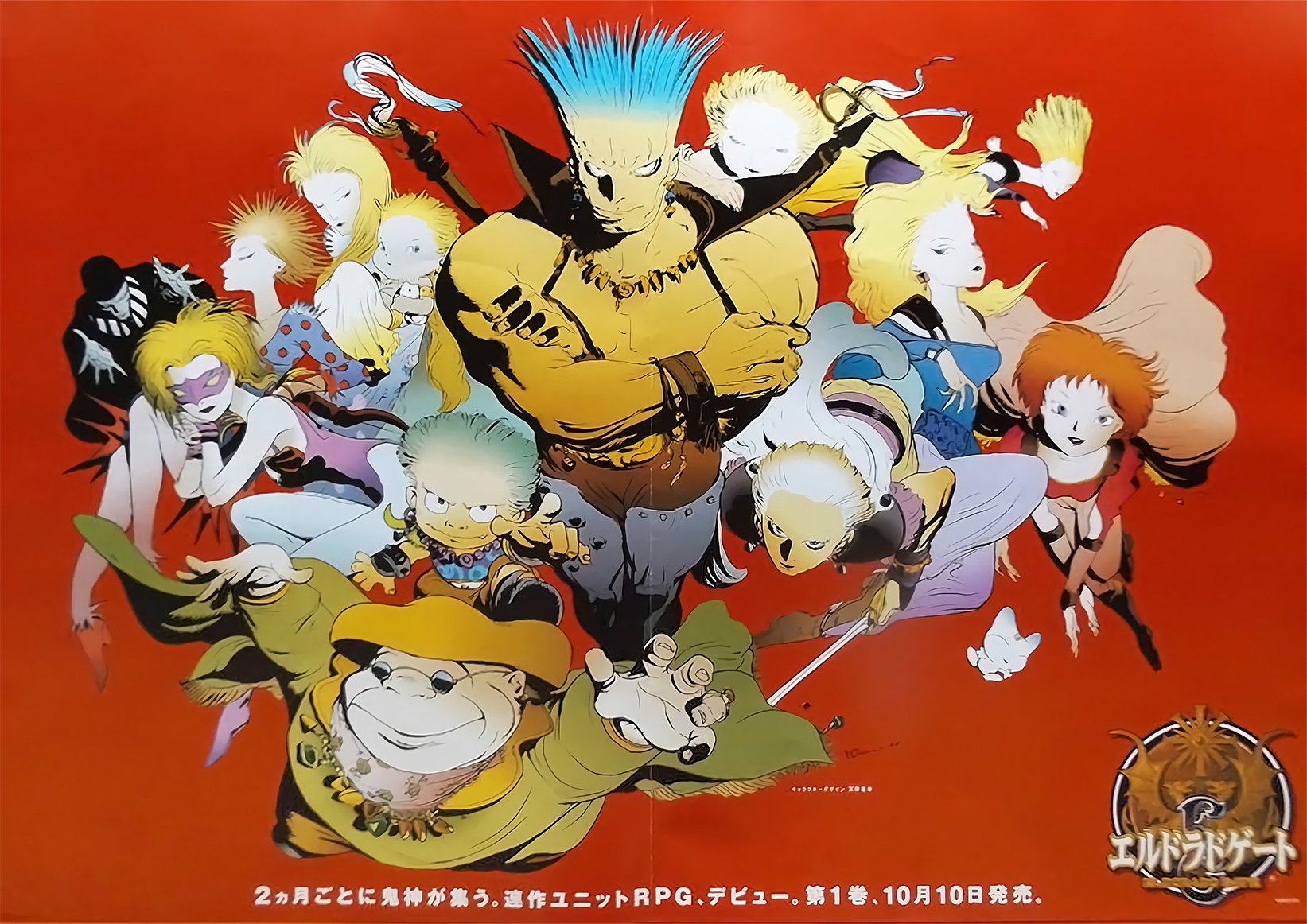
Of all the JRPGs in this feature, El Dorado Gate will be the most obscure and inaccessible. There are too many factors going against it for it to ever find an audience, and that is a terrible shame because it has so much potential.
The art and character designs feature the work of Yoshitaka Amano. The graphics showcase some of the most polished and lush 2D pixel art on the Dreamcast. The overworld visuals resemble illustrative dioramas, and the characters are bouncy and meticulously detailed, reminiscent of sprites seen in Breath of Fire III and IV.
The battles are depicted in a minimalistic style, akin to old Dragon Quest games or Earthbound. In these battles, Amano’s art is relied upon to depict the foes. Unfortunately, the heroes are not visually represented, requiring players to use their imaginations as the battles unfold.
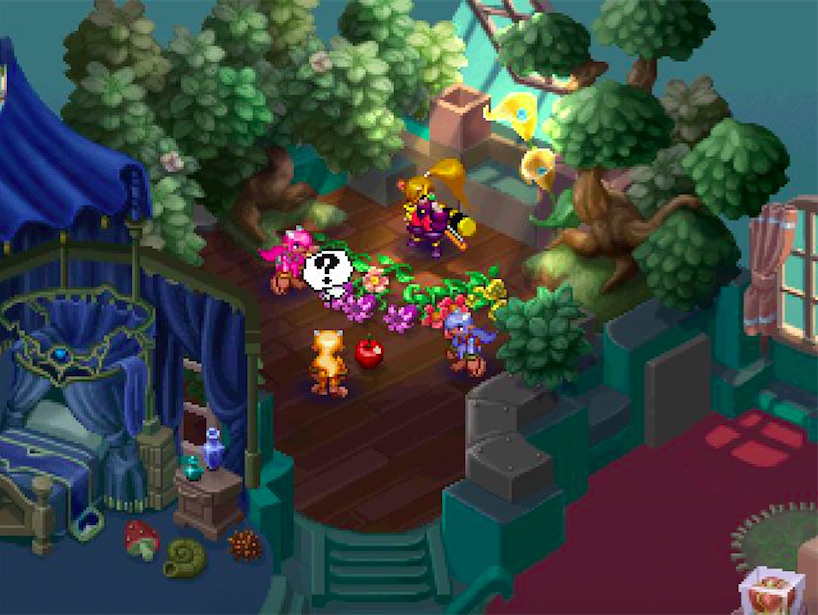
The gameplay is very traditional JRPG fare. It is more linear than most and characters only level up at specific story sequences. What made El Dorado Gate so unique was its storytelling which spanned seven volumes. Yeah, El Dorado Gate was a Japanese-only episodic release in an age of physical media when the Dreamcast was losing all support and was being discontinued, thus ensuring its obscurity.
Each volume was released about a month apart, with each part exploring some of the 12 protagonists. These parts would eventually culminate in the final seventh volume where everything converges.
As for the story itself, El Dorado Gate is so obscure due to its unusual release that information about its plot is not well-documented. There are hints about a big bad who is about to be resurrected, but El Dorado Gate has no fan translation. The only available information consists of some roughly written guides on GameFAQs, but there isn’t much out there to help anyone understand the story or characters.
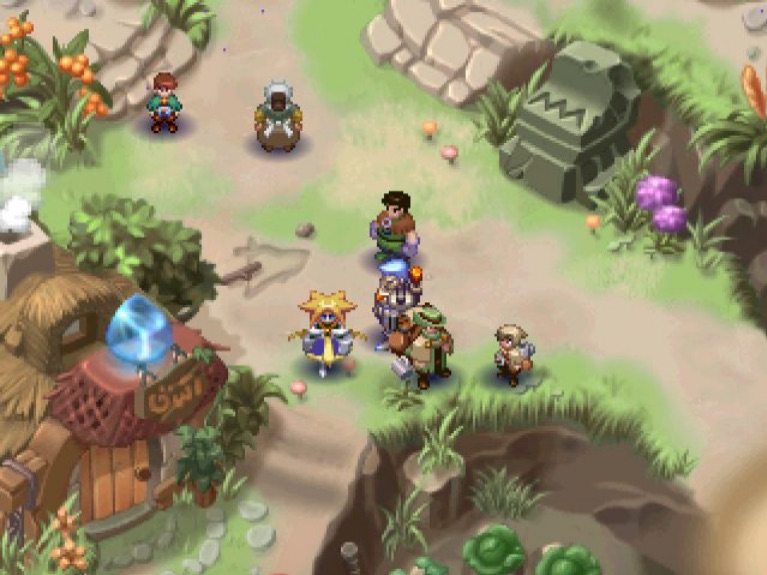
There are some rumors that El Dorado Gate was incomplete or that the final volume was rushed to a close. The fact that it was a very late Dreamcast release when SEGA was abandoning the console gives this rumor a lot of credence.
Unless you know Japanese, El Dorado Gate is going to be impenetrable. While Japanese-only RPGs are not too uncommon, what makes this case particularly unusual is that it was published by Capcom in 2000. Capcom was not a small publisher around that time, and for them to have produced a lavish 2D JRPG with some big-name talent behind it adds more prestige to it than the average JRPG.
How El Dorado Gate has managed to not get a fan translation in over 20 years is a testament to its obscurity. Capcom is not likely to ever revisit it or bring it back, and that is a terrible shame because it looks so cool.
Elemental Gimmick Gear (Dreamcast)
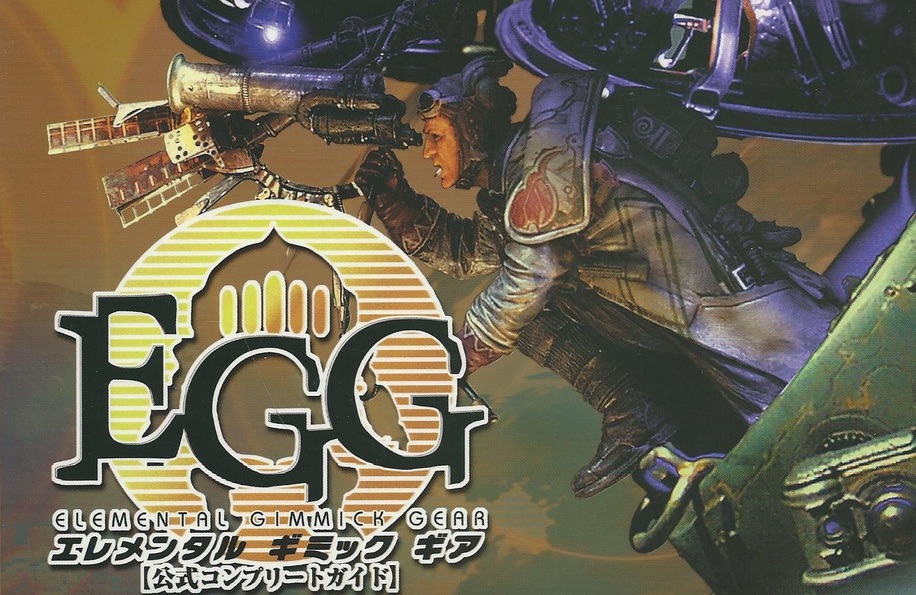
It is true that the Dreamcast did not get many RPGs. This was especially difficult for fans in the West who eagerly anticipated what kind of interesting adventures would appear on SEGA’s final console. While the likes of Skies of Arcadia and Phantasy Star Online stole the show with their dazzling 3D worlds, most gamers failed to notice a 2D gem that managed to make it to the West.
In the 2000s, it was considered passé for any game to be 2D. Everything moving forward seemingly had to be in 3D, and many 2D games were commonly overlooked. Elemental Gimmick Gear was one of the many 2D games of its era that got ignored for not embracing the trends of the day. Despite not following the market leaders, its visuals ultimately aged better than most 3D games on the Dreamcast.
Elemental Gimmick Gear (or E.G.G.) is an action RPG that takes cues from 2D Zelda games. The gameplay is primarily an overhead action RPG, but major battles are done in 3D like a fighting game. The combat is very difficult and tedious due to the mechanics and it can be easy to be overwhelmed.
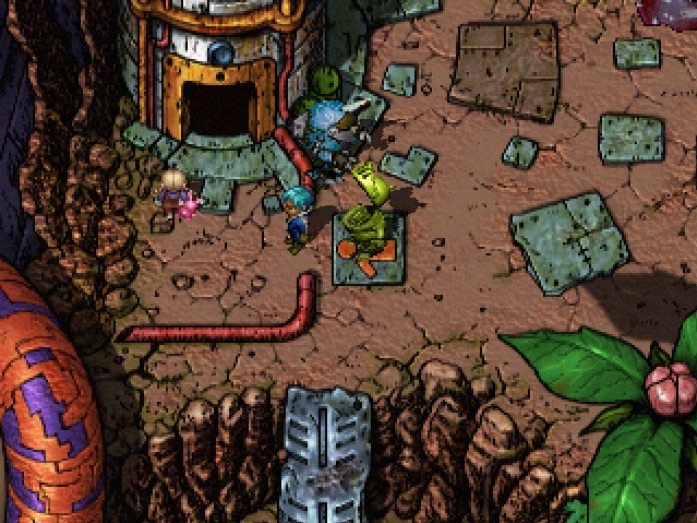
The story of E.G.G. is creative. Nestled deep within a dense jungle, an ancient, dome-shaped ruin was unearthed. Amidst the excavation, researchers stumbled upon a damaged, egg-shaped contraption. Upon closer inspection, the contraption unexpectedly revealed a remarkably well-preserved man, defying the passage of nearly 5000 years.
This man, known as ‘The Sleeper,’ and his enigmatic apparatus were transported to a nearby laboratory for in-depth analysis, all while the excavation efforts persisted. The Sleeper’s machine was christened the Elemental Gimmick Gear (EGG), underwent extensive scrutiny, and was eventually replicated, leading to the widespread adoption of similar egg-shaped mechs for personal use by the inhabitants of Tokion.
Events continually compound on each other, building up to a surprisingly biblical climax. It’s got environmental themes, body horror, and some bitter-sweet emotional sequences… but most importantly, it has a grappling hook.
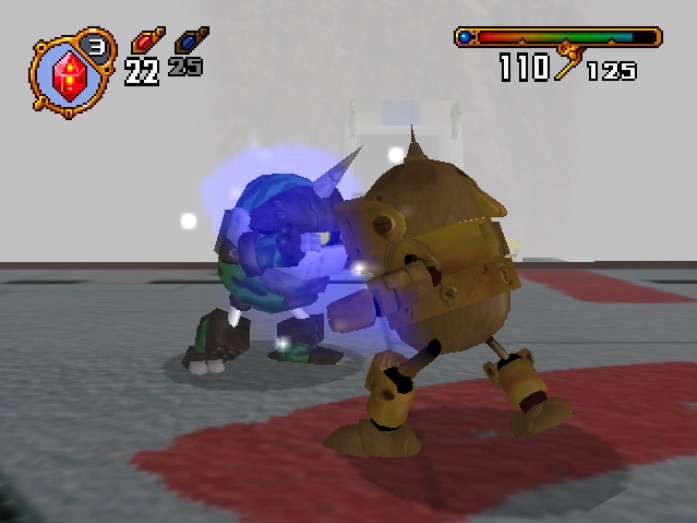
The narrative is one of the best aspects of E.G.G., but the visuals steal the show. The overhead graphics are lovingly illustrative and there is never a moment of repetition or tiling. Every screen is unique and lush with detail. Characters are prerendered sprites and the low resolution of the Dreamcast makes it so that the two art styles don’t clash.
There are more puzzles and adventure gaming in E.G.G. than there are role-playing. Gamers are dropped into a world and are expected to figure things out and explore. Apart from the freedom to build the E.G.G.’s load out, there is not much else for customization or any party building.
E.G.G. isn’t a huge game, but it is challenging and lengthy since it has almost no hand-holding when it comes to solving its mysteries. It is a slow-paced and tough game that demands players pay attention to what they’re doing – it isn’t like Zelda where it’s safe to play casually. E.G.G. is a vicious RPG.
Wild Arms 5 (PlayStation 2)
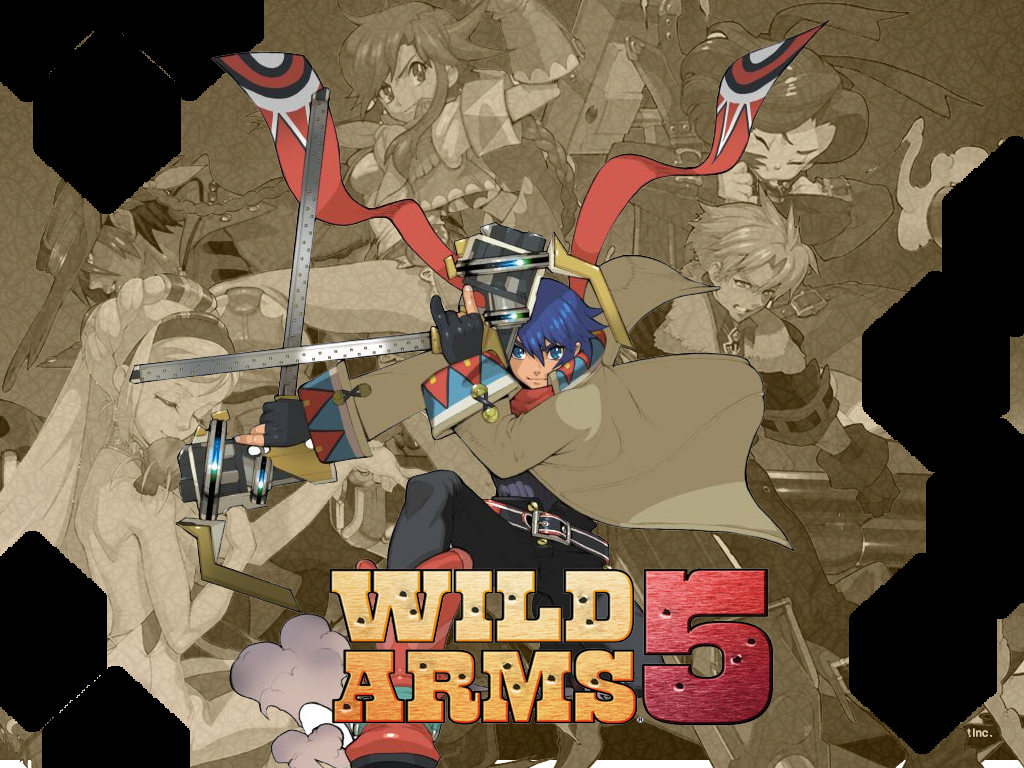
The Wild Arms games never quite reached the mainstream despite always hanging in the background since the original PlayStation. It seemed like the franchise could never quite get enough attention away whenever a new Final Fantasy came around. This series is certainly a more modest JRPG than the likes of what Squaresoft was producing, but after several entries, Media Vision got tired of being one-upped and went all-out.
Wild Arms 5 stands out as one of the most massive and expansive AAA JRPGs on the PlayStation 2. Its production values rivaled the competition, and as one of the last JRPGs on the PlayStation 2, it fully leveraged the console’s capabilities, resulting in exceptional visual sharpness and polish.
The character models were big and detailed. The cutscenes had a director’s discerning eye and were fully voiced. There was a sprawling world map in an age when Final Fantasy had completely abandoned them. The music flawlessly captures a wistful Western atmosphere. Wild Arms 5 has it all.
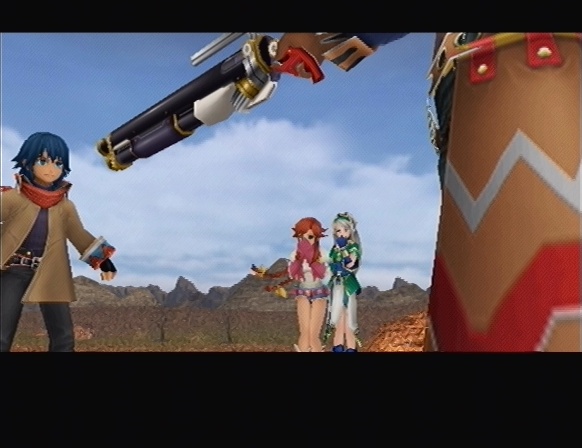
In a world oppressed by the Veruni, an advanced extraterrestrial race that conquered Earth a century ago, humans face relentless suffering. The planet is a treasure trove of Lost Technology, with mechs known as Golems and specialized weaponry called ARMs standing out as the most prominent relics. Those dedicated to uncovering this ancient technology are dubbed Golem Hunters.
Enter Dean Stark, an ordinary 16-year-old with an extraordinary dream—to break free from his humble village and earn a worldwide reputation as a Golem Hunter. His life takes an unexpected turn when he witnesses a celestial phenomenon: the descent from the heavens of a golem’s arm, tightly clutching a mysterious white-haired girl named Avril.
What begins as a simple quest to aid Avril in recovering her lost memories quickly unfolds into a grandiose adventure. Dean’s journey reveals the profound chasm separating the Human and Veruni races, compelling him to take up the mantle of reform and bridge the rift that plagues both sides of the conflict.
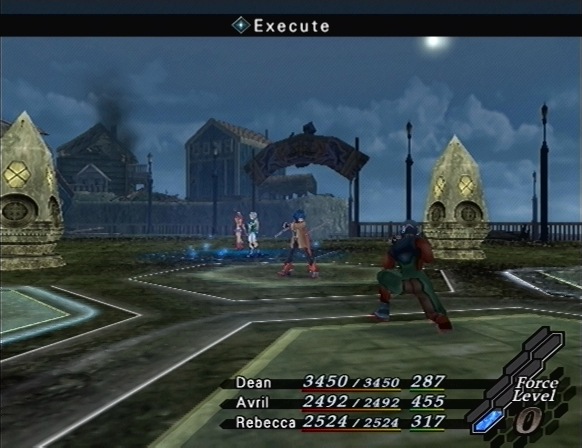
Dungeon exploration sees the return of the beloved tool-based puzzle-solving mechanic, now presented as unique bullets for Dean’s ARM, complemented by actions like sliding and stomping. They unfold like complex puzzle boxes, akin to a Zelda game. Additionally, Wild ARMs 5 pays homage to its rich franchise history by featuring an abundance of references and cameos from previous Wild ARMs games.
Wild ARMs 5, released on the franchise’s tenth anniversary, builds upon the foundation of its predecessor. It utilizes the same engine and HEX battle system but with notable refinements and enhancements. Notable changes include a reduction in the number of battle participants to three, eliminating the divisive choice between movement and attack during combat.
Unfortunately, Wild Arms 5 was one of the last of its kind and was released late into PlayStation 2’s life. As a result, it had limited printing and fetched outrageous prices on the second-hand market. Worse yet, it has never been ported to any other platform, thus ensuring its obscurity.
Shadow Hearts (PlayStation 2)

Shadow Hearts is not just an obscure JRPG on PlayStation 2, it is three. As if being an obscure trilogy wasn’t enough, it also has a forgotten predecessor on PlayStation, known as Koudelka. While Koudelka was a surprising hybrid of Resident Evil-style survival-horror and Final Fantasy VII-like JRPG gameplay, the Shadow Hearts games were much more traditional with their gameplay. This was not true for the story.
In the first installment, the story is set in an alternate early 20th century, a tumultuous era of war and upheaval. Amidst the chaos, a solitary perverted hero named Yuri embarks on a quest to save the soul of his beloved. He is a man on the run who can transform into a demon and finds love in the most unlikely of places.
The saga continues with Shadow Hearts: Covenant, where we delve deeper into a world teetering on the brink of catastrophe. As the stakes rise, alliances shift, and Yuri faces a new set of supernatural adversaries. The game’s narrative brilliance lies in its ability to intertwine history with dark folklore, crafting an unforgettable narrative that melds absurdist comedy and harrowing occult.

Finally, in Shadow Hearts: From the New World, we journey to the bustling streets of 1920s America, where dark forces lurk behind the facade of modernity. This time, there is a new cast of intriguing characters, each harboring their secrets. The series continues to defy conventions with its fusing of historical accuracy, supernatural intrigue, and of course – comedy.
The first entry is a very early PS2 game to the point it almost resembles something on PS1. It relies heavily on prerendered backgrounds and the character models are on the iffy side. Covenant is where the franchise truly came into its own and boasts the biggest and most detailed settings in the series. The third entry scales back its scope, but was a late PS2 game and is one of the more polished entries.
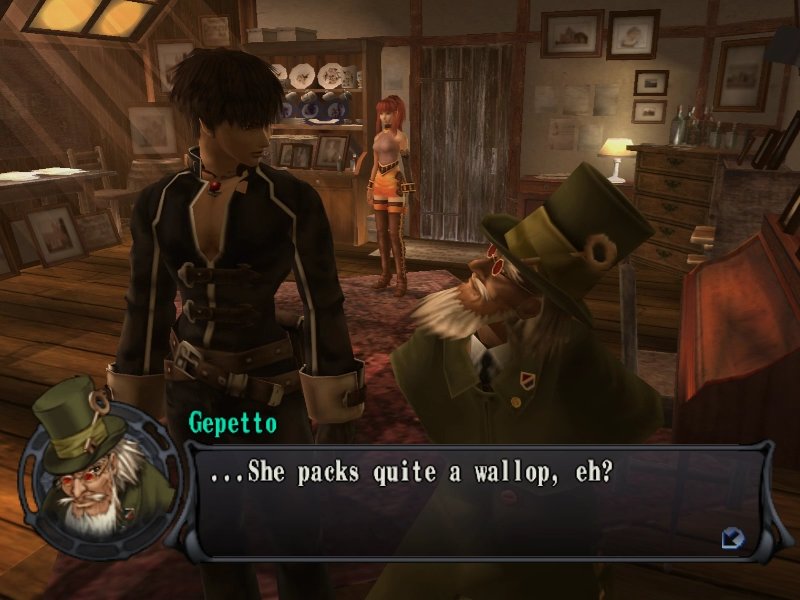
No matter which of the Shadow Hearts is played, all three rely on the “Judgement Ring” system. This mechanic has players play a timing mini-game for every action performed in battle. It’s simple and it is depicted with a ring with a spinner – the trick is to tap the select button when the dial points to the highlighted area. There’s an element of risk vs reward for gamers who try to land in the tiny red zone for critical hits/bonus effects.
The Judgement Ring is a good system and it fostered unique status effects that could affect the spinner, like making it slower, faster, smaller, or even spin in reverse. Apart from the unique take on turn-based gameplay, the story and writing in these games are highly entertaining. Covenant especially stands out as the series highpoint.
All three Shadow Hearts are still obtainable, but mileage may vary. Unfortunately, the only way to officially play these is on a PlayStation 2. None have been ported to any other platform and it isn’t likely they will see remakes any time soon.
Okage: Shadow King (PlayStation 2)
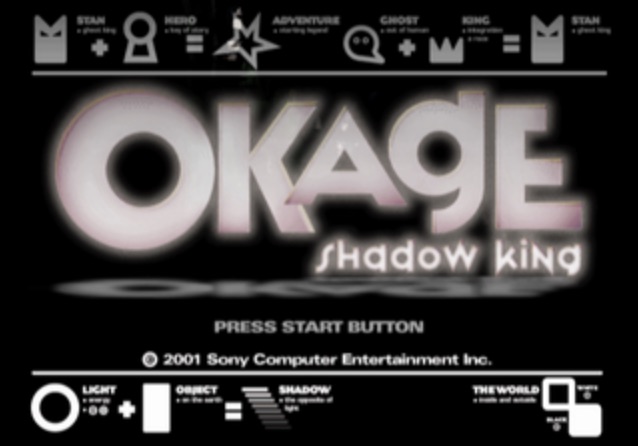
Okage: Shadow King is a very odd RPG that aims to subvert a lot of the tropes that are associated with the genre. Immediately, the first thing anyone will notice about it is its unconventional and offbeat art style. Okage looks like some kind of bizarre marriage of Tim Burton and manga but with some early PlayStation 2 graphical quirks.
Every character and enemy seems puppet-like and the intense depth of field effect only adds to the miniature diorama quality of the visuals. It’s a very charming style and is by far the most notable aspect of Okage because everything else about it is pretty dull.
The story is serviceable, but the writing is incredibly dry and tedious. The dialogue will drone on and most of the humor falls flat. There was an attempt to do something modern like Earthbound, but the developers lacked the wit and cleverness to pull any of it off, resulting in a pretty boring story about a kid and a demon living in his shadow.
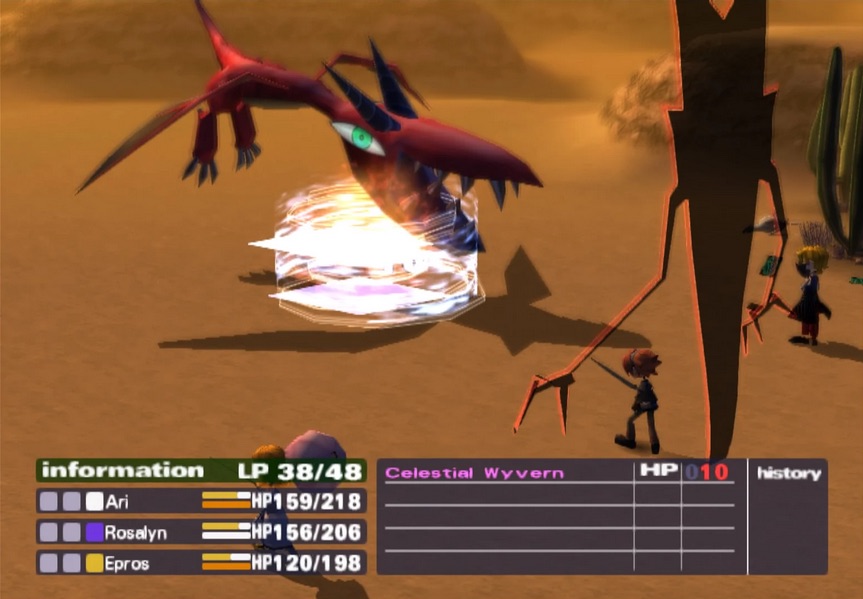
The unusual graphics make Okage memorable and are admittedly the star of the show. Some shots are very picturesque and there is never a moment where there isn’t something interesting to see. This game is a classic case of style over substance.
The combat is a very basic turn-based RPG system but with one minor twist: all characters perform their actions at once after the player selects them. This is a minor flourish that tends to make battles more hectic than necessary and never amounts to any strategic moments.
The random battles are very aggressive and the game can be prone to glitches. This is made worse if playing the PlayStation 4 PSN version on a PlayStation 5 via backward compatibility, rendering the game almost unplayable.
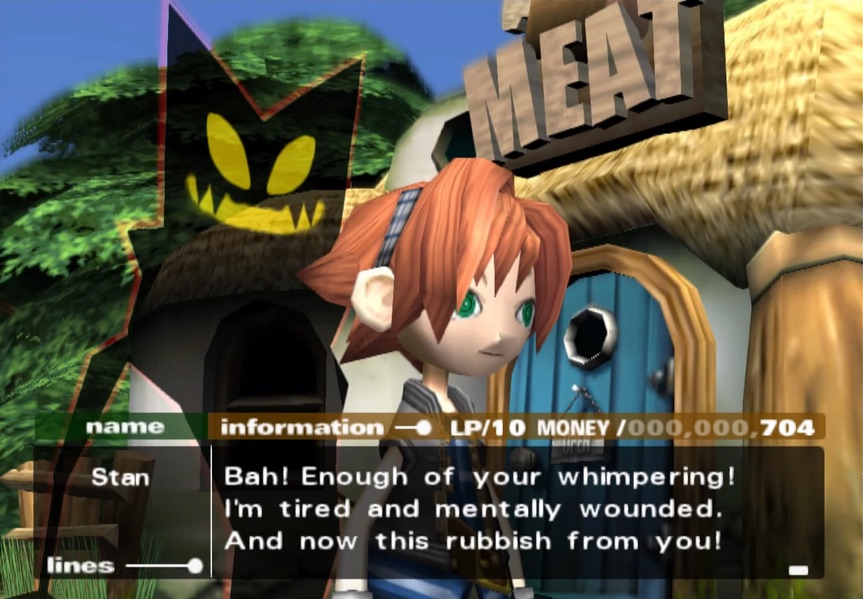
Okage is likely to never be remade or get a sequel. It’s a bizarre curiosity and is mostly known for its graphics and being one of the first RPGs on PlayStation 2. While it is cheap on the second-hand market and there is a version on PSN, Okage will probably stay obscure because of how much of an oddity it is.
Okage has a frustrating existence because of how interesting it appears, but it’s only skin-deep. It’s worth a play to experience the freakshow graphics and style, but beyond that, it is a boring game. It should have been cool.
Dual Hearts (PlayStation 2)
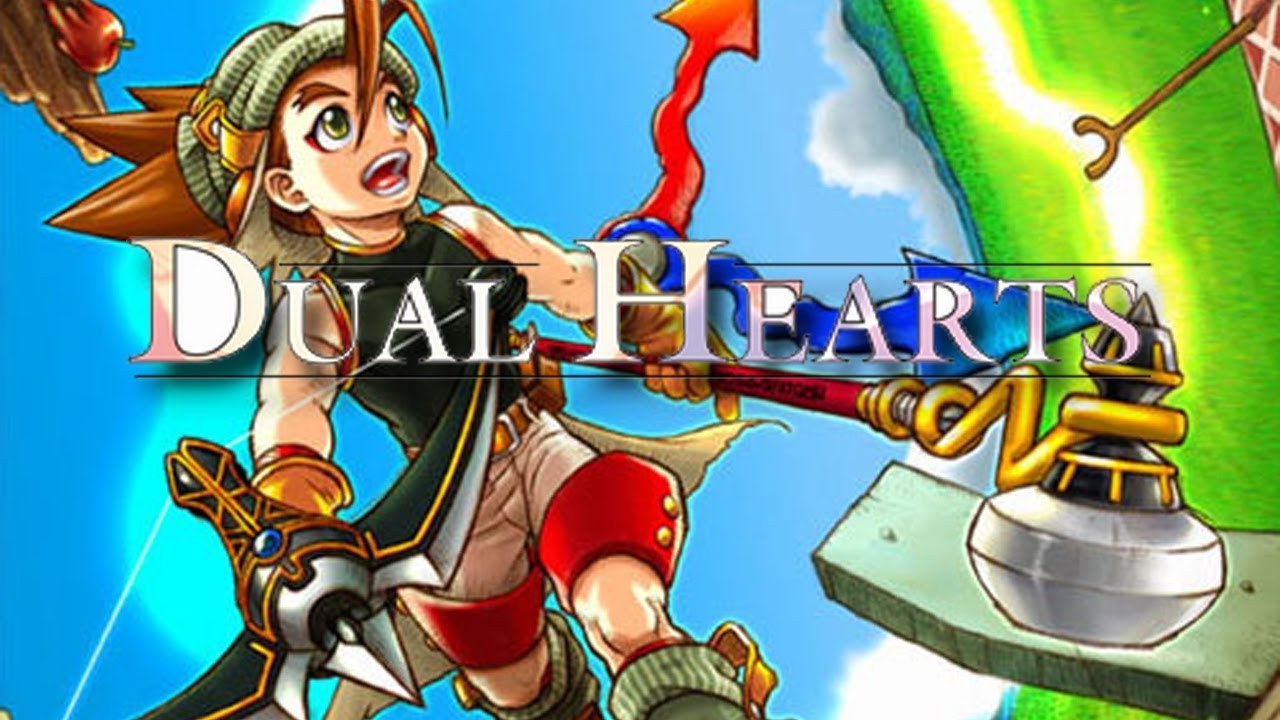
Dual Hearts had the rotten luck of coinciding with the launches of Shadow Hearts and Kingdom Hearts. Given its title, ‘Dual Hearts,’ it’s not surprising that it struggled to distinguish itself during that period.
It didn’t help that the title makes no sense in context. Dual Hearts should have been titled anything but ‘Dual Hearts‘ and if it had to be called anything, it should have been ‘Alundra 3′. The first Alundra was about a Link-esque hero who traversed dreams with Zelda-like gameplay. Dual Hearts is a lot like that and is even from the same developers of the first Alundra.
The first Alundra drew a lot of influences from 2D overhead Zelda games but was much harder. Dual Hearts takes from 3D Zelda games and also lifts some of the UI design, further emphasizing the developer’s inspiration. Just like in Alundra, the player will spend a lot of time in a town and will help people by going into their dreams as the gameplay unfolds like an action RPG.
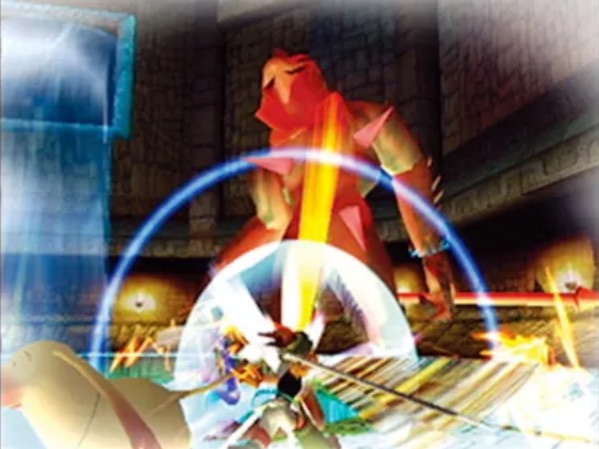
What makes Dual Hearts unique is the dreams/dungeons. Every one of them has a gimmick that offers unique challenges. At times, the theming is evocative of something out of a Banjo Kazooie game: one level is underwater, there’s a stealth-focused level and even Santa Claus himself gets an appropriately themed ice level.
Eventually, these dreams become nightmares and shift from something out of NiGHTS into a twisted hallucination. Dual Hearts can be challenging and the side content can feel like you’re being dragged kicking and screaming through a river of rusty nails and glass, but thankfully the races are optional.
There is a good amount of variety between all the settings and the protagonist’s playability is on par with the likes of Link or Sora. Combat is very standard for a game of its era – featuring the tried and true targeting system featured in almost every action RPG ever made.
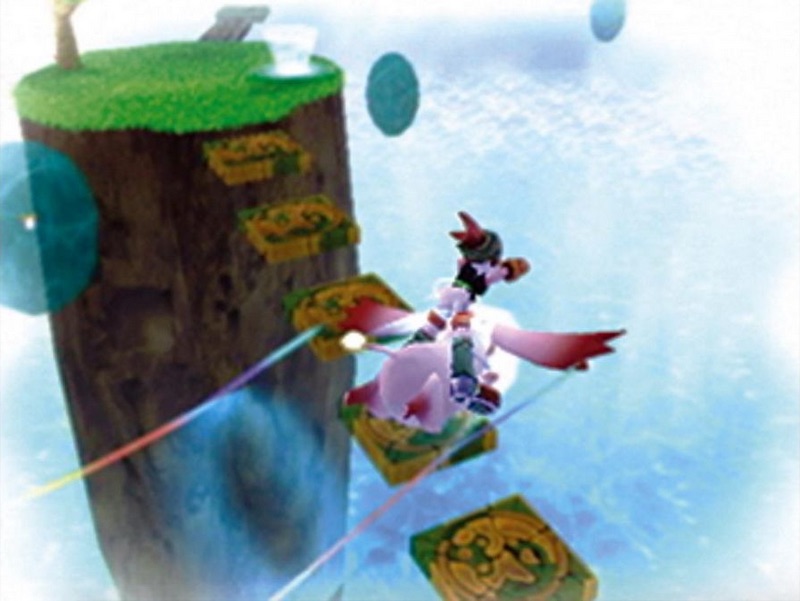
Dual Hearts is in a weird place for obscurity and rarity. It is pretty rare, but it is also so obscure and forgotten that it fetches reasonable prices in the second-hand market. The fact that this is an Atlus-published game makes it even more unusual because Atlus releases tend to become collector items.
Getting an original PlayStation 2 physical copy may not be cost-prohibitive, but it is currently the only official means to play Dual Hearts. Sadly, this is another title that is stuck on an old platform with no other ports or remake.
Hybrid Heaven (Nintendo 64)
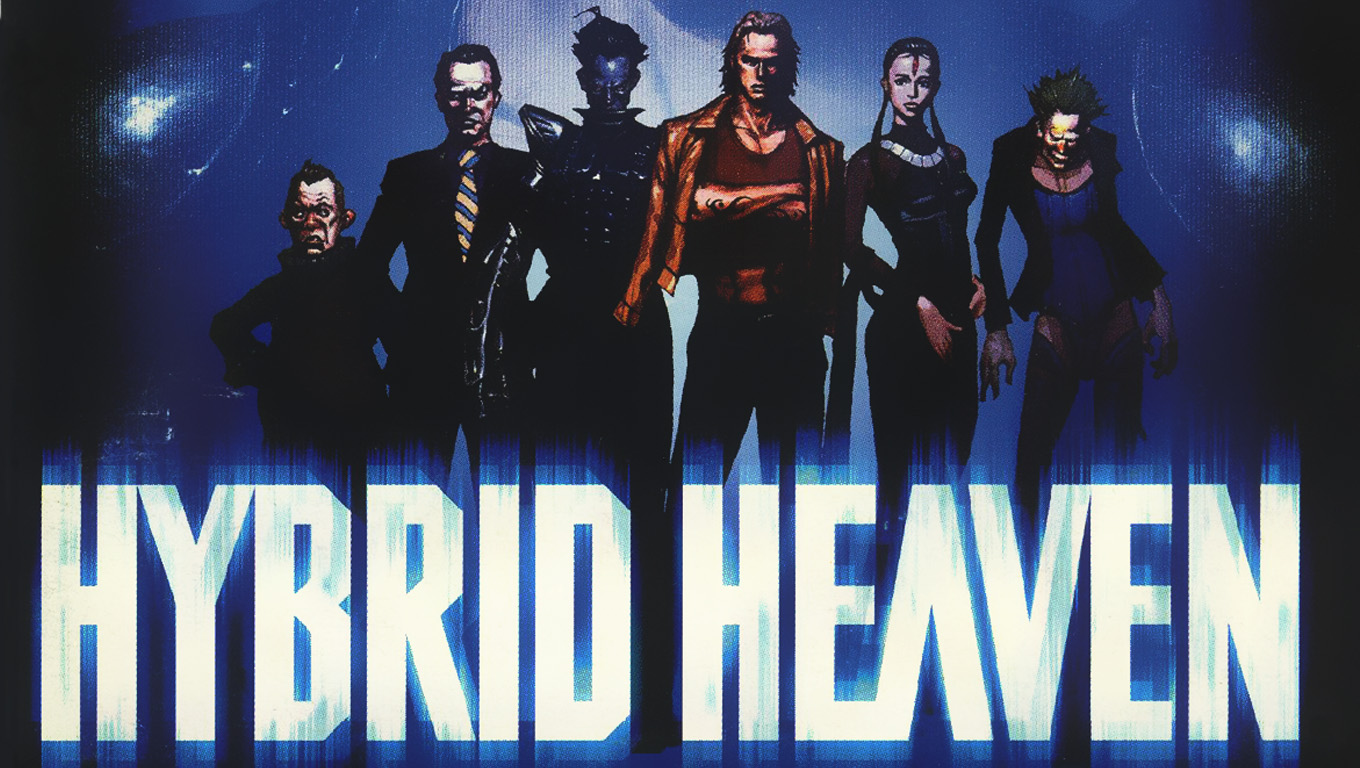
When most people think of the Nintendo 64’s selection of RPGs, usually they default to the likes of Quest 64 or Paper Mario. Sometimes there might be mentions of Ogre Battle 64 or Aidyn Chronicles, but most of the time everyone seems to have forgotten about Hybrid Heaven.
During the Nintendo 64’s lifecycle, Konami showed the console a lot of love. Not only did they put out several excellent Bomberman games on the Nintendo 64, but also a few Castlevania entries and even some Goeman titles too. It’s surprising that Konami didn’t try to port Metal Gear Solid or Silent Hill, but instead developed a unique cyberpunk RPG with Hybrid Heaven.
Like Metal Gear Solid, Hybrid Heaven‘s plot revolves around cloning and super soldiers, but that is where the similarities end. The rest of the story involves aliens trying to take over the world by cloning the President. Between the conspiracy plot and the player’s being in a state of confusion due to the surreality of the vagueness of the protagonist’s identity, Hybrid Heaven is unlike anything on the Nintendo 64.
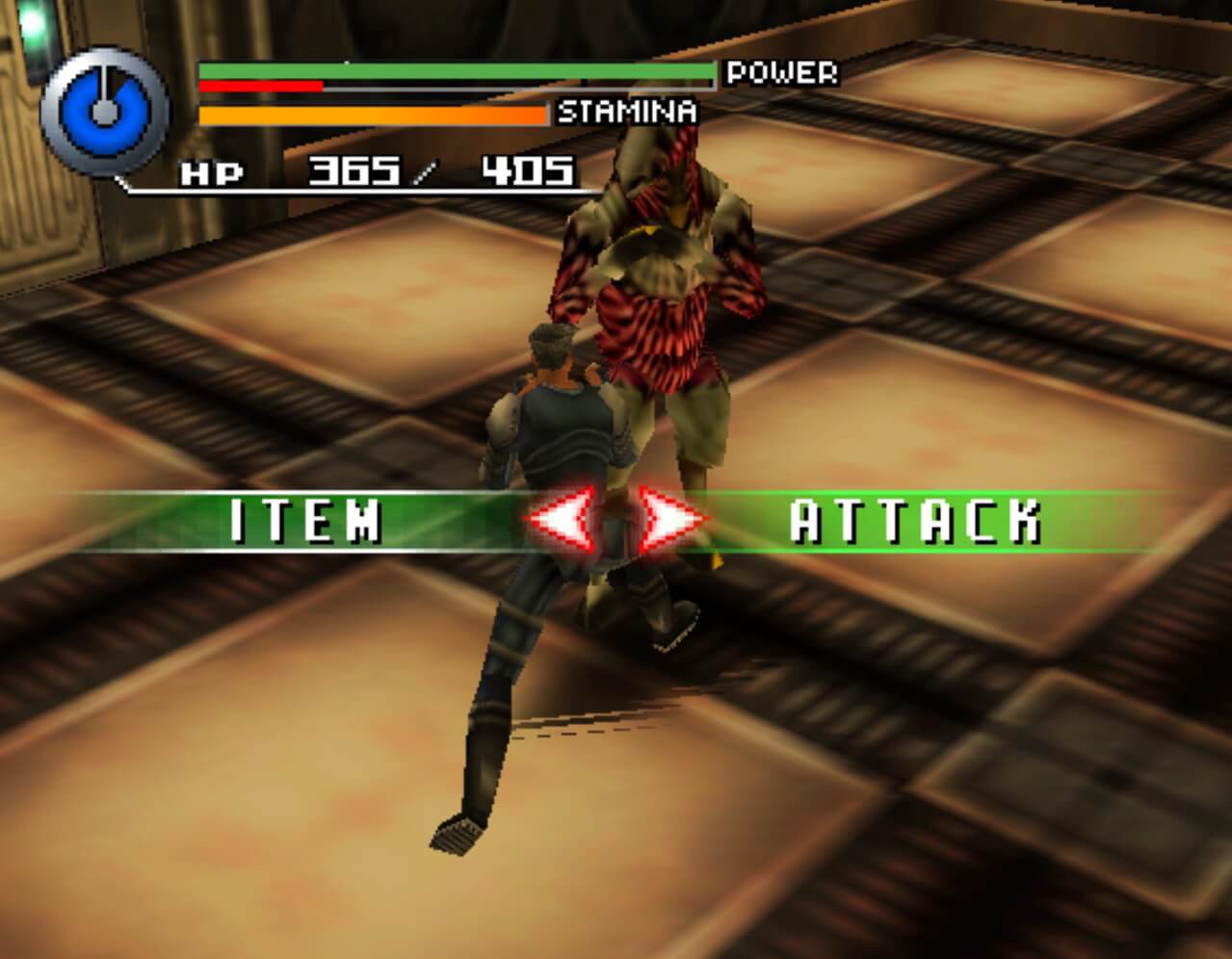
The strangeness of the story and gritty cyberpunk setting is only the surface of Hybrid Heaven‘s mystique. The gameplay is not like any other RPG ever made and features a mix of hardcore adventuring and turn-based wrestling mechanics.
Fighting is one versus one and players select various kinds of punches, kicks, and throws from menus. All maneuvers have their unique properties and foes as well. Leveling up is also unconventional and requires players to not only power up the protagonist but also each move. It is like each limb is a party member and they all must work together.
Hybrid Heaven has a lot going for it. The combat system is very engaging and the setting is compelling due to the high stakes. Players will explore shady-looking installations, looking for key items, hitting switches, doing some platforming, and pulling off daring escapes from body-horror-looking aliens.
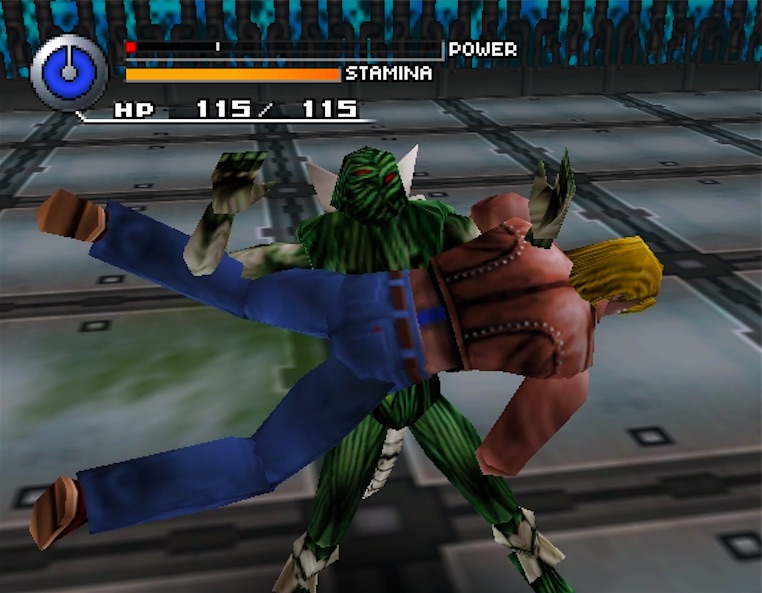
Hybrid Heaven has shades of survival-horror gameplay. Trying to stay alive becomes a harrowing ordeal. It consistently presents the feeling of one person pitted against insurmountable odds, surviving by the narrowest of margins. This moody-looking Nintendo 64 game boasts style and impressively incorporates voice acting into its cutscenes.
Hybrid Heaven serves as another example of its intense obscurity rendering it largely unknown to most collectors and scalpers. Copies are both highly affordable and readily available, yet its lack of association with any established Konami franchise caused it to fade into oblivion. It remains exclusively accessible on the Nintendo 64 and has never been ported, remade, or made available on any Virtual Console platform.
Much like many of Konami’s classic games, Hybrid Heaven is destined to linger in obscurity. During its initial release, it proved too unconventional for most gamers. As preferences have matured, people have become more receptive to its experimental gameplay. At that time, most fans were yearning for Final Fantasy on the Nintendo 64, but instead, they got something considerably more intriguing.
Opoona (Wii)
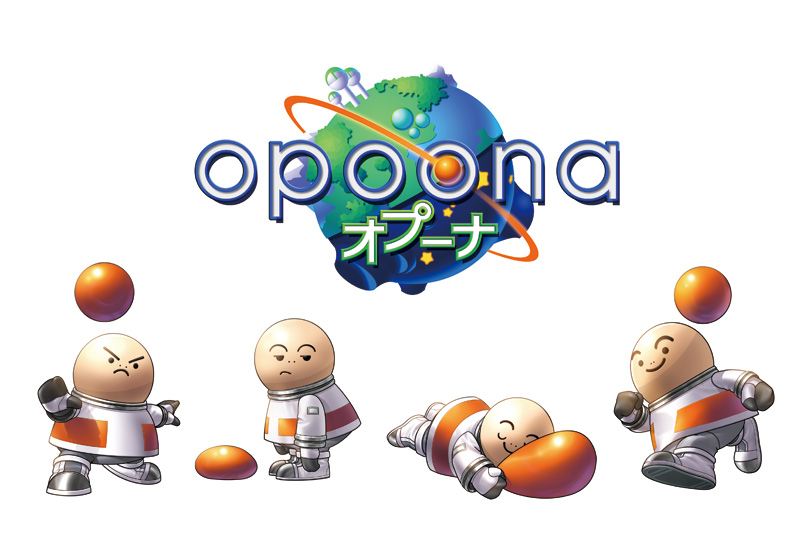
When the seventh console gen began, most devs and publishers raced to make the most realistic-looking and immersive RPGs possible. For the most part, the big players all failed. Final Fantasy XIII, lavish though it may be, was a dumbed-down hallway simulator that lacked verisimilitude in the world-building. Even Mass Effect, a sprawling space opera that promised the universe, was barren and utterly plain.
While most gamers were looking at the PlayStation 3 or the Xbox 360 for RPGs that tried to replicate life, it was the humble Wii that delivered. Opoona was a very early RPG on Wii with a silly name but dared to go all out with some of the most impressive attention to detail ever seen in an RPG.
Opoona revolves around a family of aliens who crash-land on the planet Landroll, which has been colonized by humans. Opoona and his siblings must unite to save their comatose parents, combat a dark presence growing in Landroll, and forge friendships with a few humans they encounter along the way.
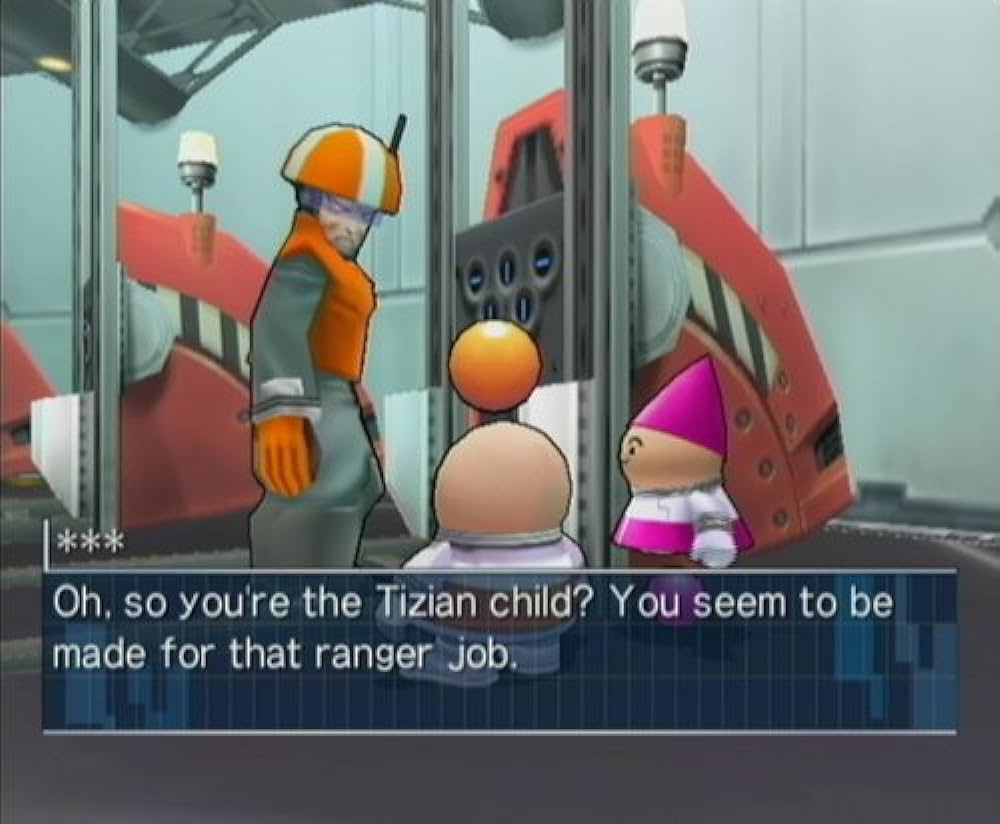
Where Opoona lacks in complexity, it makes up for in scale and detail. Landroll has many cities and each one is massive. Not only is the scale awe-inspiring, but every city also has its customs and culture, and players are encouraged to partake in visiting musical halls, theaters, and fully realized art galleries. Most of this absurd attention to detail is unnecessary to the gameplay, but it makes for an incredibly immersive experience.
Playing Opoona will require some patience since it does have a very slow and drawn-out beginning, but it is worth it. This is from the same devs who were responsible for the DS and 3DS Dragon Quest remakes, so RPG fans can rest assured that they’re in good hands.
There is an element of life simulation in Opoona, as the protagonist can undertake various jobs while embarking on their quest. The game is designed to provide a relaxing RPG experience, with its pleasing, round graphics and soft colors that make it easy for players to adopt a laid-back state of mind.

The entire game can be played with just the nunchuk and it seems like this was what the developer intended. Even the real-time combat system is very simple and minimalistic but still manages to require players to be mindful of what they’re doing.
Battles don’t last long, as the pom pom on the aliens’ heads are effective in scraps and menus don’t stop time from passing. There is a time limit for battles, so no matter what, they are going to be short which helps keep the gameplay from getting stale.
Opoona is an ambitious if a bit drawn-out RPG on a console that is primarily known for only having Xenoblade as its flagship RPG. Most hardcore RPG fans were likely turned off by its Playskool-like character designs, which made it easy to dismiss. Physical copies are affordable and plentiful, though it’s only available on Wii. It was never ported, and apart from a guest appearance in Warriors All-Stars, Koei Tecmo forgot about Opoona.
Jade Cocoon: Story of Tamamayu (PlayStation)
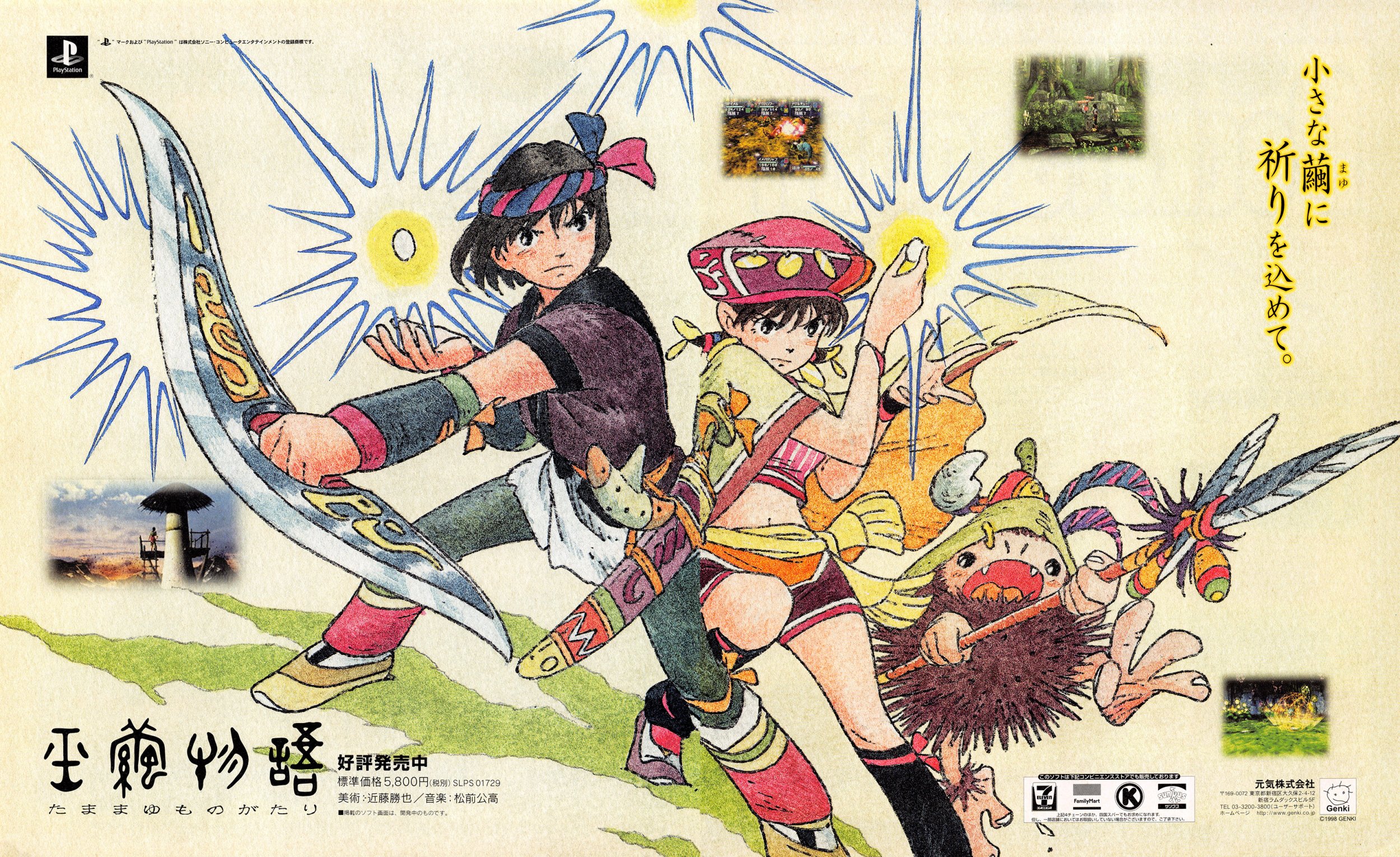
It’s the 1990s and Pokemon mania is sweeping the world. Along comes Jade Cocoon: Story of Tamamayu, an RPG that looks like it might be a big kid’s fantasy mon-catching game on PlayStation. It boasts beautiful prerendered backgrounds and cool character designs from Studio Ghibli’s Katsuya Kondo.
Jade Cocoon: Story of Tamamayu isn’t really a monster-catching RPG like Pokemon. It is more like a monster-breeder RPG with a protagonist who can fight battles. The monsters are very bug-like and what makes them distinct is that the protagonist can fuse them.
Fusing is interesting because the creature’s physical appearance changes along with its stats and passive properties. This makes the customization in Jade Cocoon nigh endless and it’s further compounded by the main character who also gains levels, equipment, and abilities.
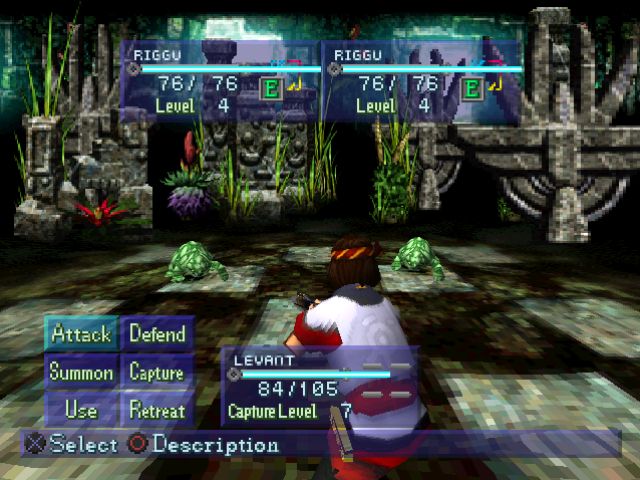
The system is very solid and it holds its own with more modern JPRGs today. It shows potential and it is a shame that the PlayStation 2 sequel failed to build upon it in a meaningful way. Exploration does have Levant control with tank controls, which also technically means that this is a resi-like.
Jade Cocoon is a laid-back game. The story doesn’t have world-ending stakes and the hero, Levant doesn’t go far away from home. His goal is to find a way to remove a curse that has cast many of the villagers into an unwakable slumber. Levant can take as long as he needs, it isn’t like anybody is going anywhere.
What makes Jade Cocoon: Story of Tamamayu engrossing to this day is its presentation and visuals. Having Kondo on character design duties results in some timeless-looking characters that inform the setting. The backgrounds are very atmospheric and there are a lot of them.

The only drawback to this breeding adventure is how short it is. Levant’s journey is over in under 10 hours while playing casually. The developers seemingly realized this shortcoming and added a post-game mode called ‘The Eternal Corridor’. This infinitely randomly generated zone offers new gear and creatures, but once you’re in there, it is forever.
Jade Cocoon: Story of Tamamayu only got a PSN re-release in Japan for PlayStation 3. Interested gamers have only either the sloppy seas or acquiring an original physical PlayStation copy. Thankfully, this is another situation where the game is very obscure and forgotten and most scalpers are unaware of it.
Used copies are reasonably priced between the $40 and $60 range and they aren’t that rare. While it won’t last as long as most RPGs with this feature, it is one of the more balanced and accessible options. Remember kids, always make a separate save file for the Eternal Corridor.
Eternal Sonata (PlayStation 3/Xbox 360)
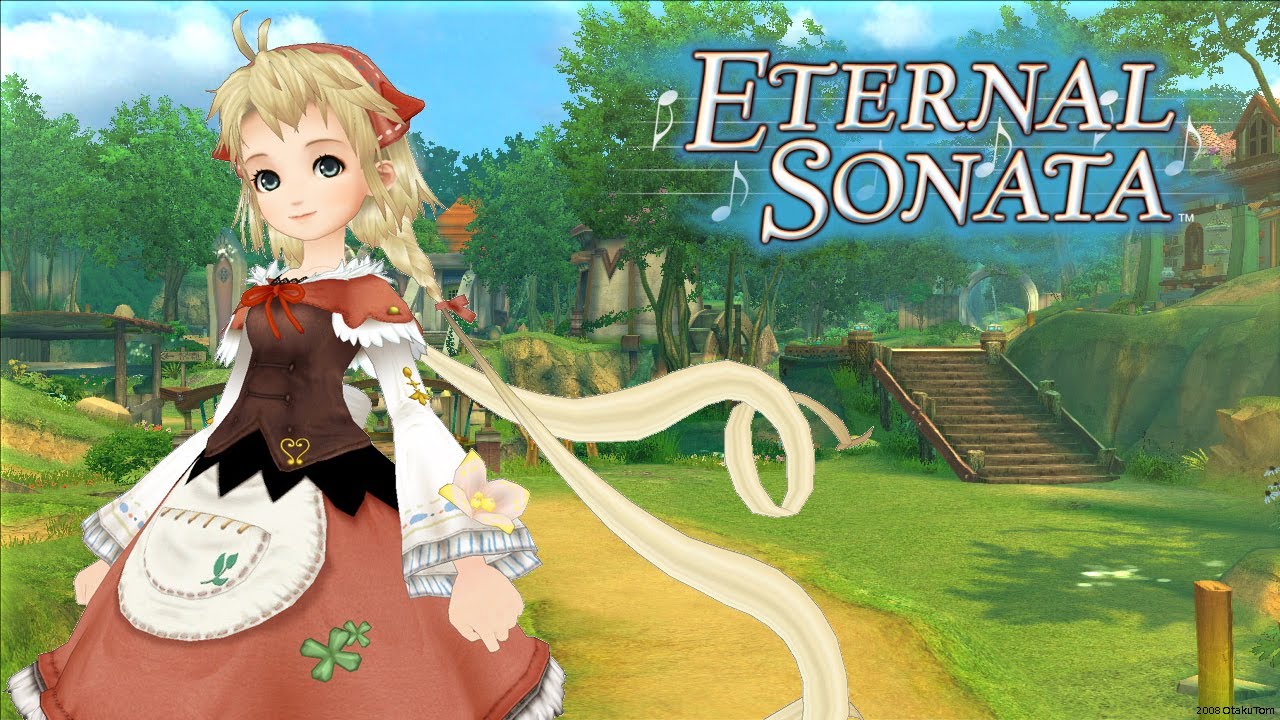
The seventh console gen is best remembered as a ‘dark age’ for Japanese games. This was the beginning of the ‘HD’ era, which was when game development costs would skyrocket. A lot of Japanese developers would struggle during this time and would be forced into several possibilities: be relegated to mobile game development, conform to Western demographic demands, or risk everything and stay the course.
Bandai Namco was and still is one of the few Japanese publishers who were able to take a risk like Eternal Sonata during the mid-2000s and take the hit if it didn’t work out. It was a darling with critics and JRPG fans at the time and managed to reach reasonable sales expectations. Sadly, the world quickly forgot about this lush musical JRPG as gamers were quick to embrace new trends at the time.
The game is set in the dream world of Frédéric Chopin, the famous Polish composer and pianist. The story revolves around a young girl named Polka, who has a terminal illness, and her journey with a group of companions. Each chapter is based on one of his compositions and has significant connections to the history of the world at the time he wrote each piece.
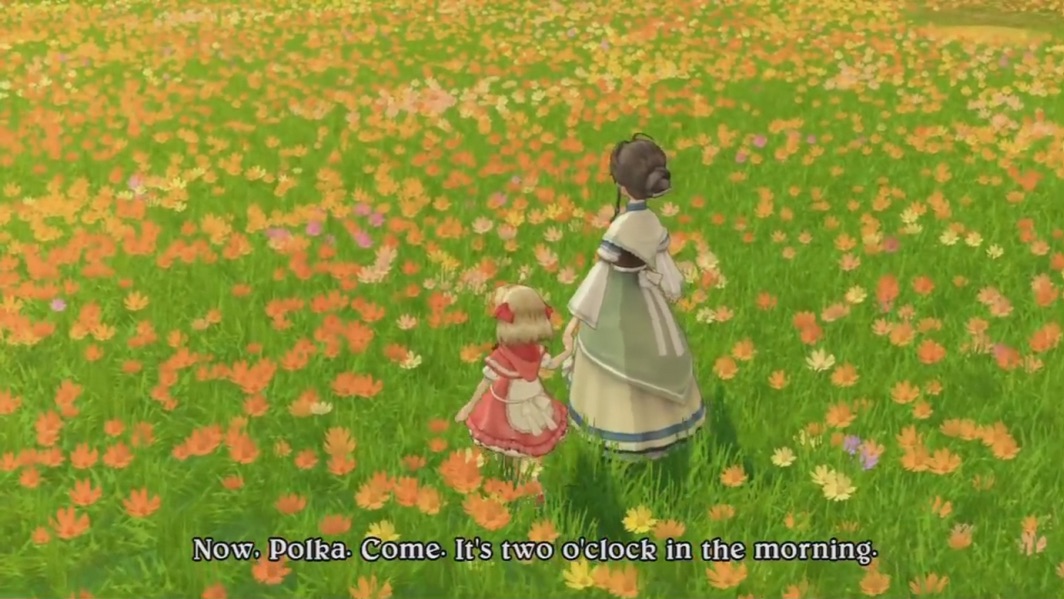
Throughout the game, they explore the dream world created by Chopin’s mind, facing various challenges and enemies while uncovering the mysteries of the world. The narrative explores themes of life, death, and the power of music, but most importantly covers the dangers of escapism.
The gameplay is a hybrid of visible JRPG encounters with some real-time action elements. There are shades of a Tales of game in the action, which shouldn’t be surprising being how the developers of Eternal Sonata would eventually work on a bulk of the franchise.
There are a lot of gauges and parameters to keep track of, three of the twelve party members will be in battle at any moment, and the visuals can be sensory overload. Eternal Sonata is a beautiful and cozy-looking game. It’s bright and colorful, and the battles are an explosion of effect and expressive animation.
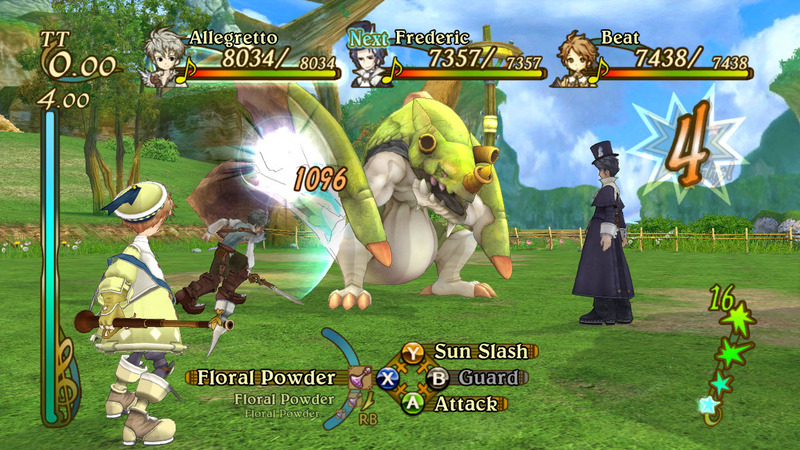
Eternal Sonata has a lot going for it. At worst it can be suffocatingly linear, but it is a game with a lot of heart poured into it. The reason why it saw nominal success was that the trend at the time was for everything to be dark and gritty.
Something this might have been more successful on Wii, where something with colorful anime visuals is commonly expected. The industry was changing and the JRPG genre as a whole was facing irrelevancy for the first time and even the likes of Hironobu Sakaguchi’s efforts struggled to make lasting impacts.
The popularity of JRPGs did eventually make a comeback, but it was too late for Eternal Sonata. It is largely ignored now, not even getting a remaster or port to anything current. Thankfully, it is cheap and plentiful to acquire, so gamers who still have their seventh-gen consoles can pick it up under the $50 range.
Enchanted Arms (PlayStation 3/Xbox 360)

It’s 2006 and Fromsoftware hasn’t released Demon’s Souls and hasn’t changed the landscape of the game industry yet. They’ve put out several cult classic franchises like the King’s Field and Armored Core games and a few quirky one-offs like Evergrace and Metal Wolf Chaos. Suddenly they decide to try to eat Square Enix’s lunch by trying to do their take on a Final Fantasy-inspired RPG.
If you ever wondered what a pre-Dark Souls Fromsoft developed Final Fantasy would look like, Enchanted Arms is it and it is everything you’d expect. The obscene post-processing effects, the cavalier approach to memory budget, and bizarre references to other Fromsoft games… Enchanted Arms is quite a hallucinatory trip with anime pretty boys.
The story is a bit like Final Fantasy VIII in that it’s about Atsuma, a young warrior who can summon magical golems, and who also goes to an academy. Atsuma and his buddies get caught up in a developing crisis with an evil magical queen who is causing a lot of wanton mayhem and is generally unpleasant.
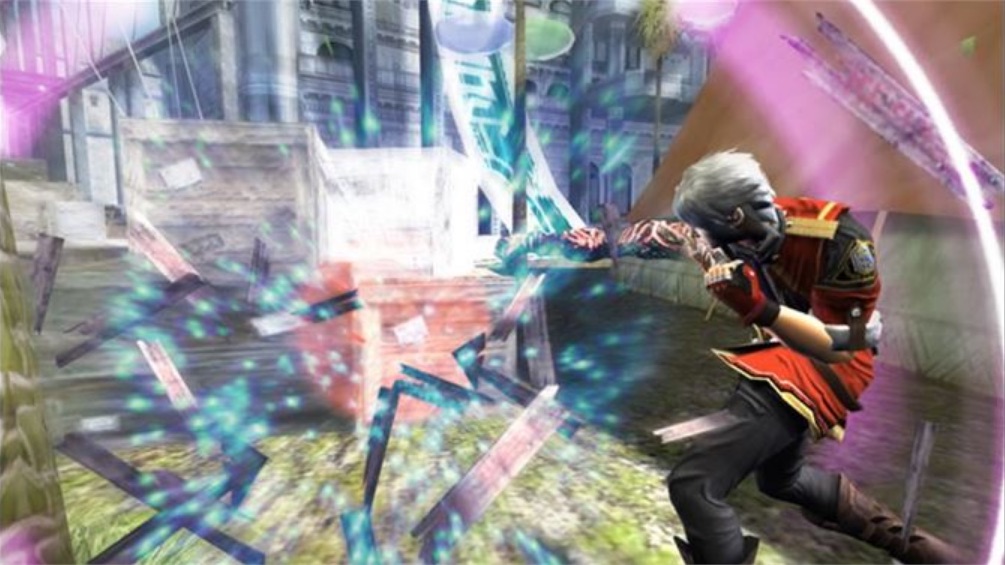
Enchanted Arms is a totally unhinged RPG. There is a vague sense of ‘throw it in’, at almost every turn. It doesn’t feel cohesive, but it does manage to be very entertaining all the way through. The outlandish costumes almost come off like they are a parody of JRPG conventions and some of the enemies seem like they are a joke.
Combat is a traditional random encounters but with a grid-based system for character placement and summoning golems. Amusingly, the golems are not as effective as human characters and are surprisingly limited in battle. The gameplay manages to be stimulating but there is no ignoring the cut corners and and cost-saving that was done to make this game a reality.
Most environments are long and vast featureless, maze-like tunnels. Most cutscenes are done with limited animation and text to imply a scene, rather than depicting one. Voice acting and characters are wildly over the top and very uppity. At times it’s hard to parse if it’s meant to be a joke at Square Enix’s expense.
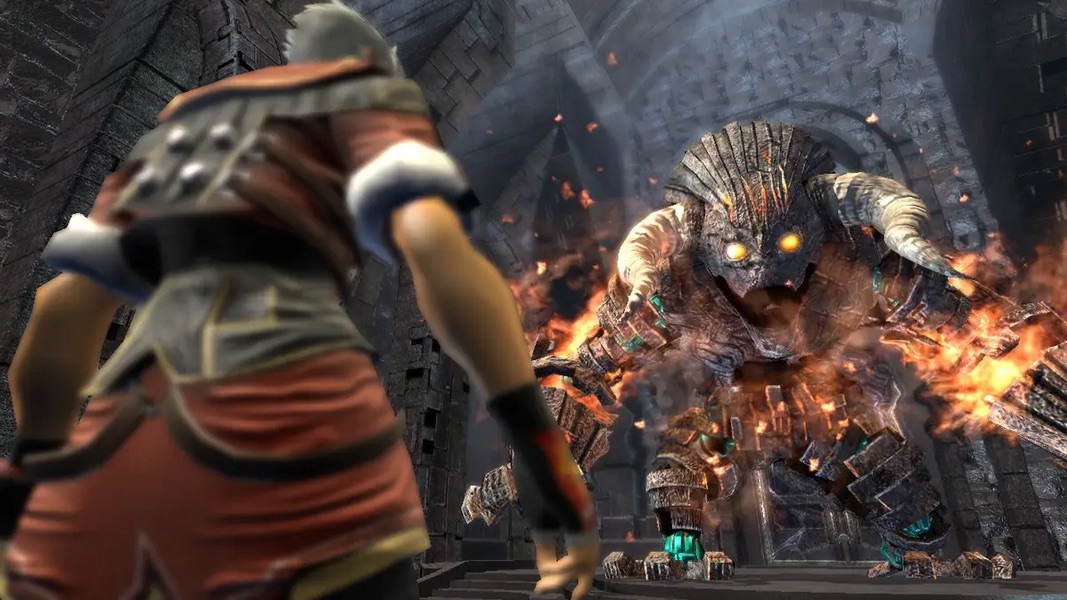
Enchanted Arms is really weird and bizarre. The strangeness of it is bolstered by a very shaky translation and low budget. It is worth the time for any curious JRPG fan and anyone curious about other kinds of games Fromsoft used to make.
Enchanted Arms‘ availability is obtainable and very cheap for Xbox 360 or PlayStation 3. Owners of Xbox One or the Series X|S consoles will also be able to take advantage of the backward compatibility options which make it more accessible.
Gamers will need to go into this one with their expectations checked. Don’t go into Enchanted Arms thinking it is on the same level as any of their Souls games or will dazzle like Sekiro or Armored Core VI. This was from a different era of Fromsoftware; a scrappier and more experimental Fromsoftware that would take risks.
Baroque (PlayStation/Saturn/Nintendo Switch)
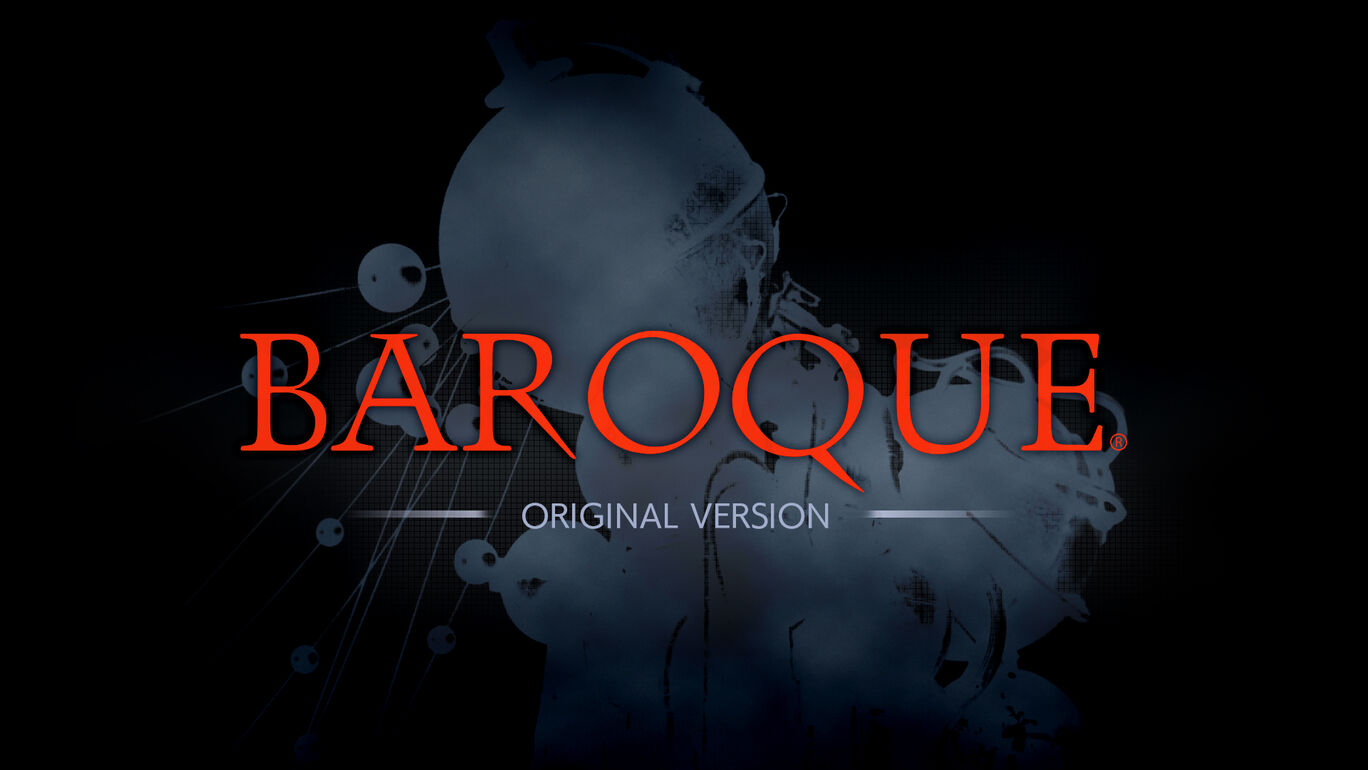
Many of the titles in this feature are so old that most publishers would never think to ever bring them to current platforms, this was not the case for Baroque. This is a timeless and obscure classic that holds up, yet remains aggressively impenetrable, even if you know Japanese… And no, the remake on PlayStation 2 and Wii does not count because it offers a different experience.
The story is about how God abandoned its creation, leaving it to become a nightmarish wasteland of guilt-monster manifestations. It is sort of like a mix between Mad God and Silent Hill but with rogue-like gameplay and a lot of angels that lead the way.
The player assumes an anonymous protagonist and is guided by angels to ascend an everchanging tower. There is more to this, but there wasn’t a defined fan translation until 2023. Until then, fans were guessing and theorizing based on the powerful and striking imagery. Even fluent Japanese speakers did not always fully grasp the narrative because Baroque is very vague and surreal.

Baroque is one macabre and bleak game that is constantly surrounded by a cold and deathly aura. Its sacrilegious and utterly oppressive atmosphere makes it very unique. The visuals feature a strong industrial motif. While most JRPGs feature a mute protagonist, Baroque‘s hero has a very specific reason why he never says anything. Not only is this an intriguing quest, but it also has a compelling driving mystery.
The gameplay is about what most people would expect from a first-person action RPG on PlayStation. It’s spartan and very simplistic mechanically, but what makes it deep is everything surrounding it. The player has to manage stats like most rogue-likes and death resets the player back to level 1. However, death in Baroque is a part of the game and is how the story progresses.
Sometimes dying is how new areas open up. The NPCs back in the town will also have new dialogue and knowledge will be retained from consuming mysterious, unidentified items. The experience can feel like being imprisoned and every run through the tower feels like a futile escape. Making a little bit of progress is a shocking and envigorating jolt of hope, so it always feels necessary to continue.
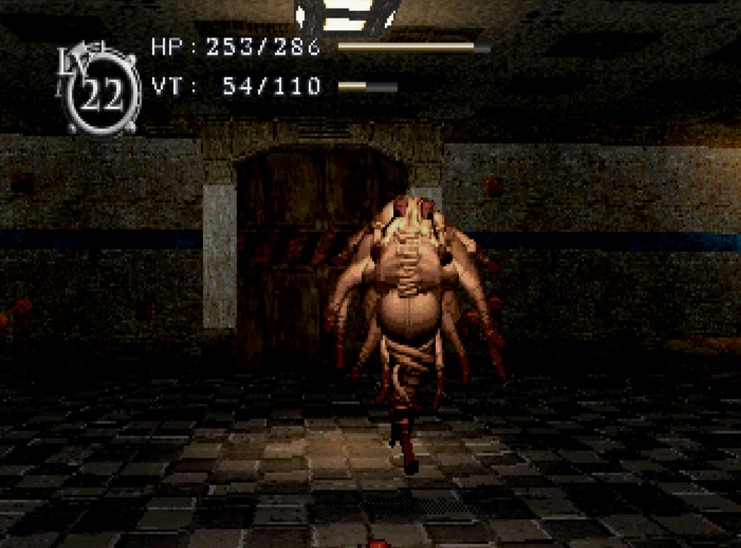
Baroque was originally released on PlayStation and Sega Saturn, but the real way to play was always the Saturn version. The PlayStation port was made to be easier and there were some audio/visual changes that the original creators did not approve of. There is a completed and polished fan translation out there for the Saturn version and this is the only way to play it in English… for now.
There is another version of Baroque for Nintendo Switch that was released on the Japanese eShop called Baroque: Original Version. This would be the most accessible way to play and was handled by Sting, the original developers themselves. It’s unknown if Baroque: Original Version will ever be localized, but this is a step in a hopeful direction.
Shadow Madness (PlayStation/PC)
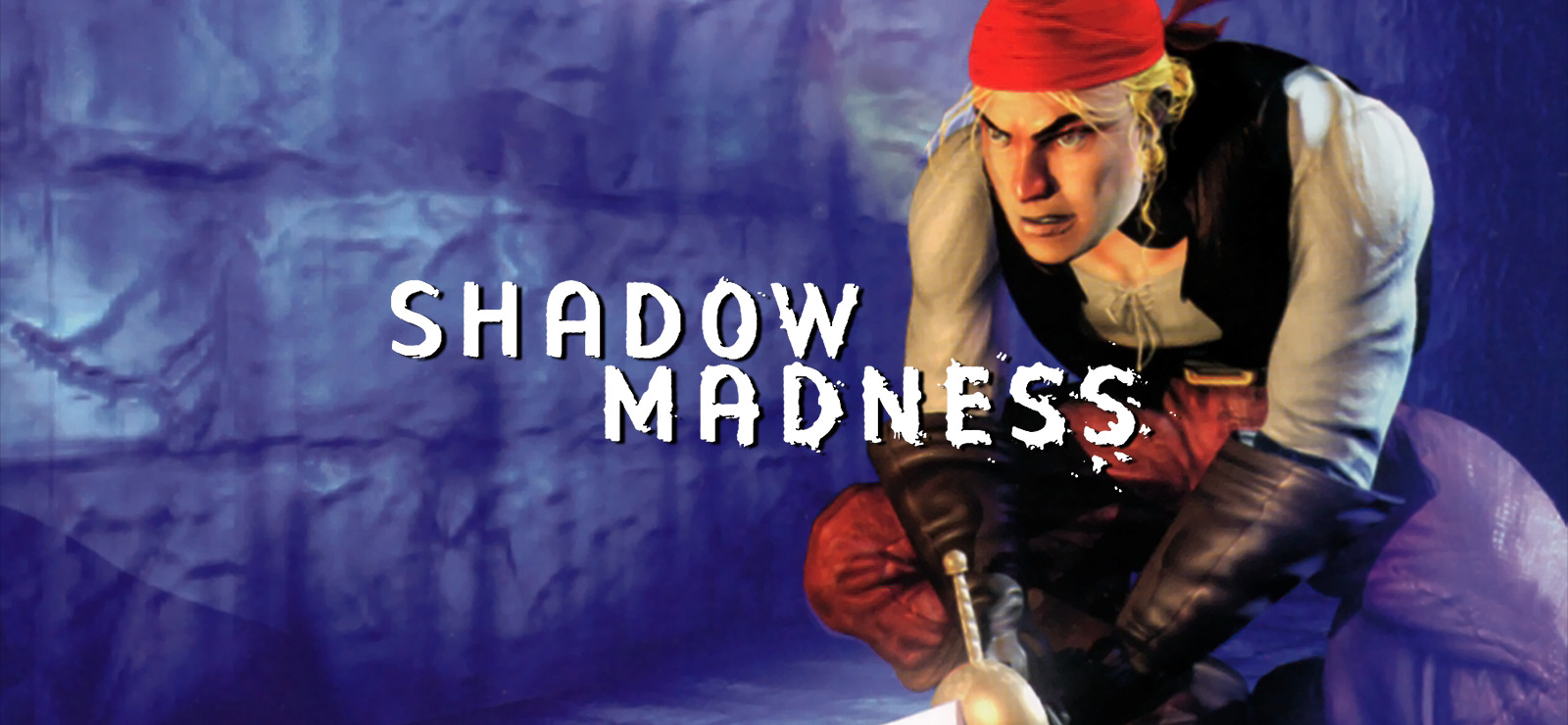
Shadow Madness was developed by the remnants of Squaresoft’s American branch after they closed up after Secret of Evermore. Ted Woosley was a notable staff member, having been the localizer for Final Fantasy games and Chrono Trigger, he set out to produce and design his own RPG with Shadow Madness.
Shadow Madness is a very odd RPG that takes elements from Final Fantasy, and Super Mario RPG and resembles something that Lucasarts would have made in the 90s. The extensive use of low-rez prerendered backgrounds makes the world feel grittier and filthier. The setting is also on the surreal side, mixing elements of sci-fi and arcane fantasy.
The hero is a smartass youthful pirate who is trying to discover his place in the world. Upon returning to his hometown, he finds it has been wiped out by a plague. Swearing revenge, he joins a weird party of characters like a harvesting robot who wields a massive scythe, a magical floating head, and even two different amazons.
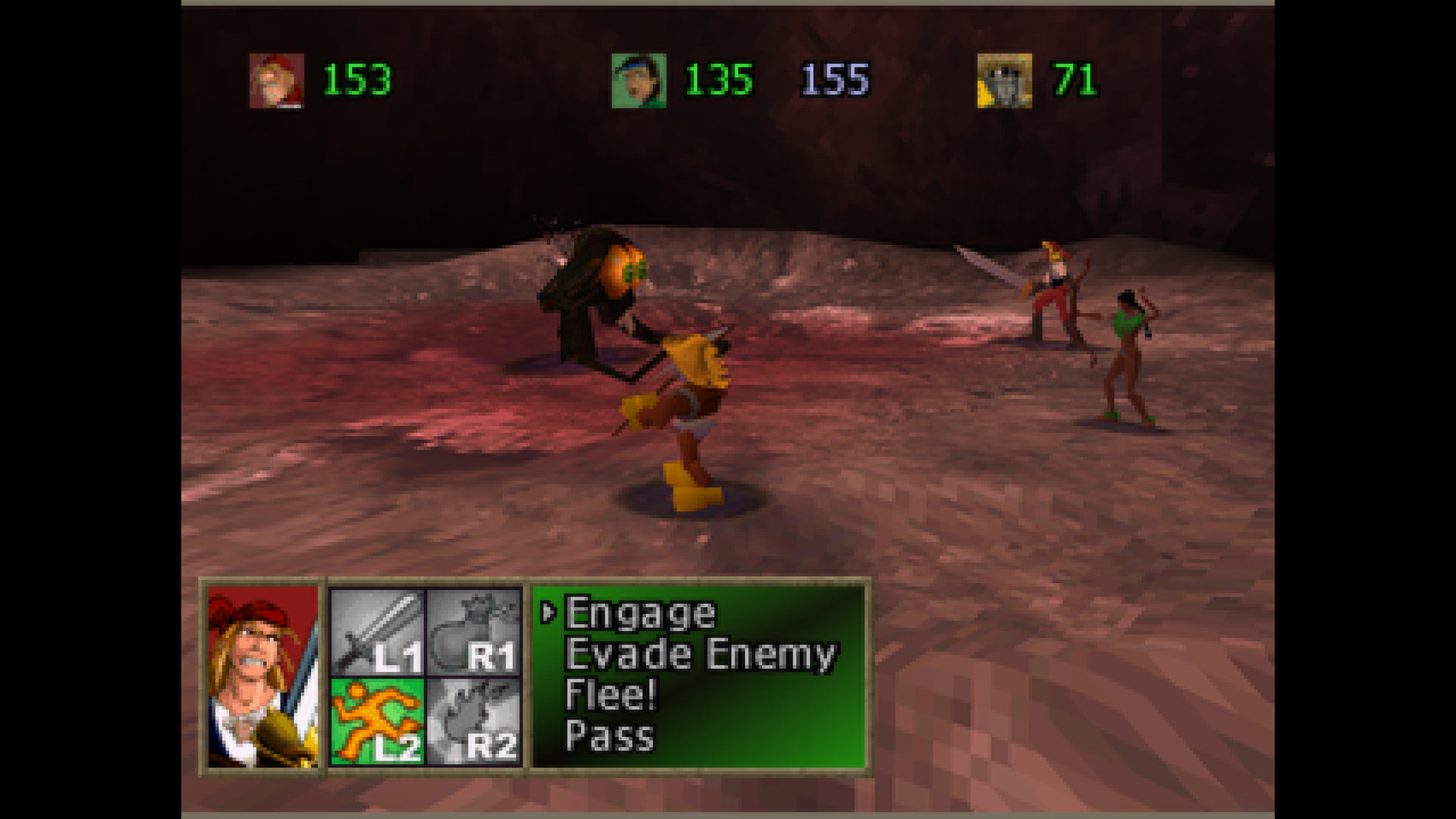
The party is always a step behind the chaos, but there is always foreboding doom looming. Shadow Madness is steeped in atmosphere and it also manages to inject quirky humor and very natural dialogue as it unfolds. It is not a smart game, but it manages to always be interesting and feels like some kind of lost prototype western Final Fantasy that was too weird to be considered for mass production.
The gameplay is largely standard for turn-based JRPGs… even though this is technically not a JRPG. Some quirks to Shadow Madness make it unique like its ugly menu and interface design and the ‘timed hits’ Stinger and the gang can do to foes. Players can also opt out of random battles by making Stinger crouch when he hears a roar, which makes this somewhat forward-thinking for its time.
Some other unusual design choices are Shadow Madness’ emphasis on mini-games. One of which is a surprisingly fleshed-out first-person shooter which is playable with any party member. The level cap is also weirdly low; characters max out at level 15 only.
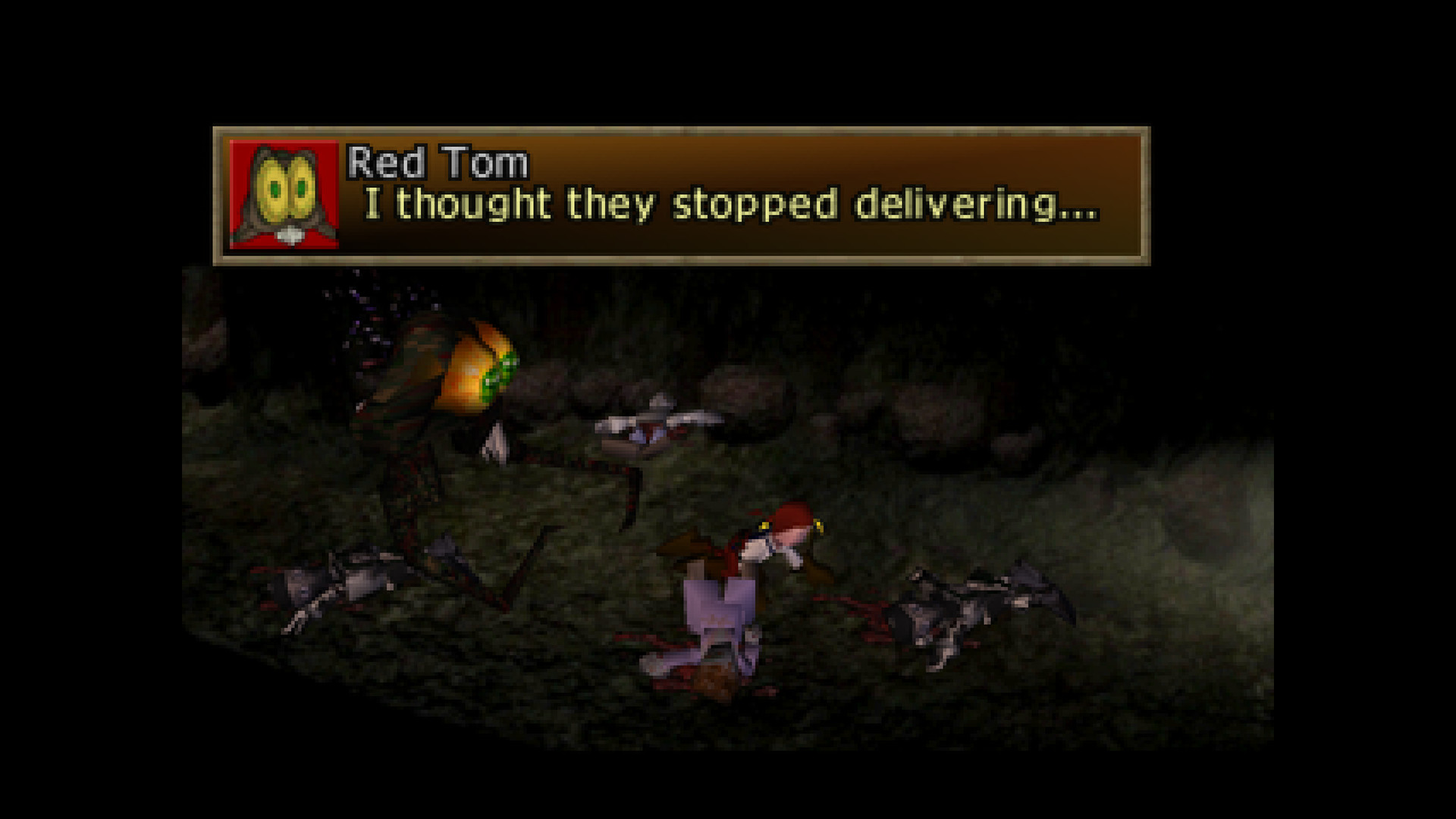
Shadow Madness was too weird and esoteric for gamers in 1999. It came out the same year as Chrono Cross but looked like it was behind Final Fantasy VII in the graphics department. Due to being kind of ugly and skungy while also having an offbeat sense of humor, it was doomed to obscurity.
What it lacks in presentation, it makes up for in personality. Shadow Madness is a really strange experience, bordering on a fever dream where you can’t shake the sweats. It never got a re-release on any of the PSN stores, but it did get a Steam and GOG re-release. If PC gaming isn’t appealing, then the original physical copies still are easily found between $30 and $40.
Septerra Core: Legacy of the Creator (PC)
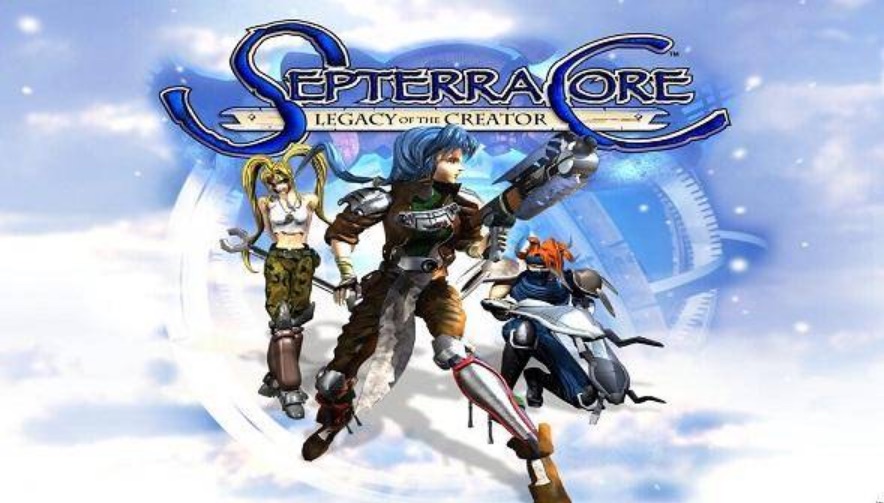
Thought that Shadow Madness would be the only Final Fantasy VII-like western-developed 90s RPG in this feature? Guess again, because Septerra Core is another sci-fi fantasy turn-based RPG, but this time it takes influences from CRPGs like Fallout 2.
Septerra Core is a story about a holy war where the big bad is someone who is fighting for what he believes in and will do whatever he can to achieve it. It’s a tale of conflicting beliefs and the story dares to have nuance to the morality of the antagonists and heroes. There was a genuine attempt at grander mythology, but shortcomings for such an ambitious project with limited resources were bound to be met.
The story follows the broad structure of the hero’s journey with little deviation. Septerra Core is set in a world consisting of seven floating continents, each with its own distinct culture and environment. These continents are stacked on top of each other, and the game’s story revolves around a prophecy that foretells the re-alignment of these continents, which would bring about catastrophic events if not prevented.
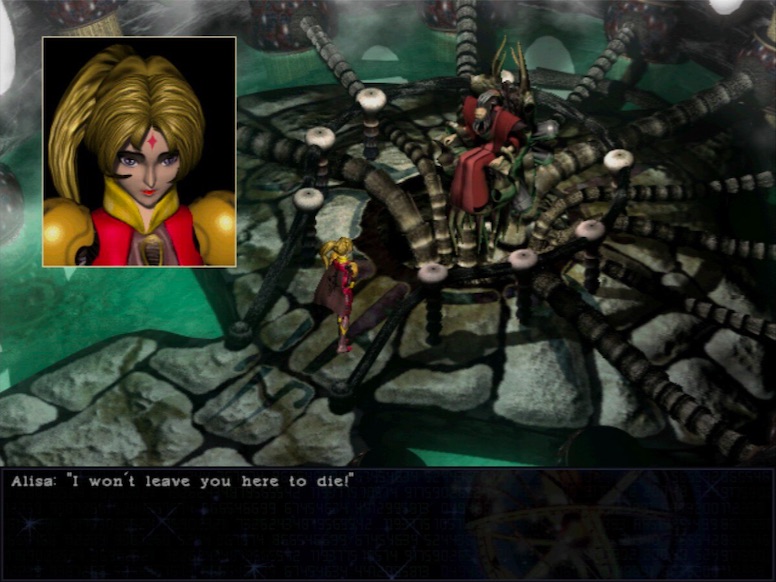
The distant isometric point of view combined with prerendered graphics and a wealth of cultures to explore and seedy underbellies. It has grit and richness that makes it feel lived in. The striking setting has influences from 80s anime and it’s apparent that the developers were weebs who knew what kind of game they wanted to make.
The combat system is inspired by Chrono Trigger but with a lot less grace. Septerra Core is pretty rough and very slow. Like Final Fantasy, there is an active-time bar that fills up, but it is divided into three parts. The longer the player takes, the more powerful the attack. This results in battles becoming overly long and drawn out no matter what.
Waiting for the bar to fill only leads to enemies getting multiple turns to take potshots at the player’s party. Compounded with the length of the game already being around the 70-hour range, Septerra Core ends up feeling like waiting for your body to die. With better execution, this could have been a cult classic.
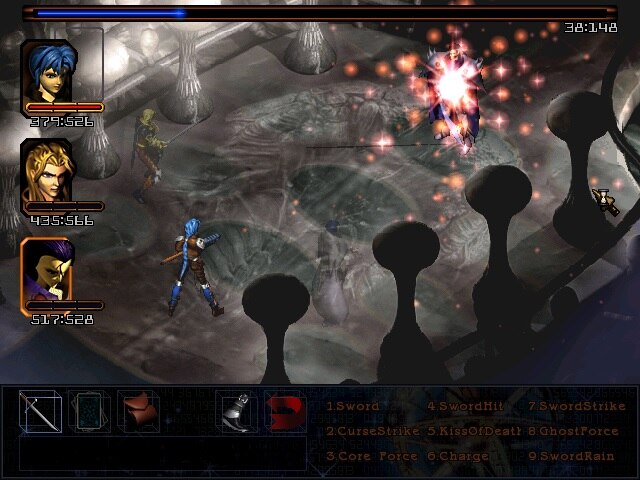
There is an appeal to Septerra Core. The influences will cater to fans of JRPGs and the magic system bears some resemblance to the junction system seen in Final Fantasy VIII. With a bit of rebalancing and redesign of some of the gameplay in a theoretical remaster, Septerra Core could reach its intended audience. It has always been a PC-only game and a PlayStation port was considered at one point but never materialized.
Septerra Core is widely available on Steam for a measly $4.99. It has never been on anything else and that is likely never going to change. It has potential but will need a bit of care to massage its blunders.
Brave Story: New Traveler (PlayStation Portable)

Brave Story: New Traveler was an early RPG for the PlayStation Portable that came out around 2007. It was a sequel to the 2002 Japanese novel and the obscure 2006 animated film Brave Story, created by Miyuki Miyabe. How this got localized to the West is mystifying. The PSP was starving for RPGs at the time, and Brave Story: New Traveler just so happened to be available at the right time.
The story follows the adventures of a young boy named Tatsuya, who’s struggling with family drama and the hardships of growing up. He gets isekai’d to a magical and fantastical realm, where he learns that he is a ‘Traveler’, a special individual with the power to change his destiny. Tatsuya embarks on a quest to save his dying friend in his homeworld.
If this premise sounds too simple to be true, then be prepared to be disappointed because Brave Story: New Traveler is as traditional as Dragon Quest. There are no twists or cheeky subversions. This is as straightforward of an RPG as can be. So why bother? Because it’s expertly executed and very polished for a PSP JRPG.
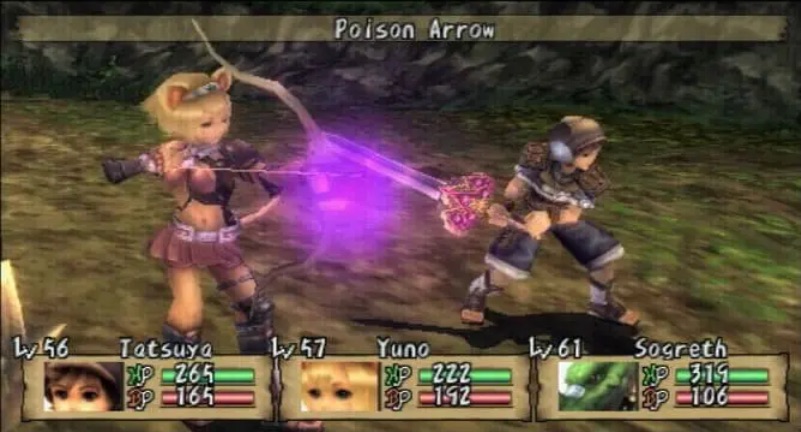
The turn-based combat is very safe and by-the-numbers. Actions are fast with snappy animations, never wasting time. That being said… it also looks very good for a PSP game from 2007. The 3D models are very detailed and have a lot of character put into them. Visually, Brave Story: New Traveler looks on par with what most late-generation PlayStation 2 games looked like.
It looks great, plays reliably, and, most importantly, the story is well-developed, ensuring that players will become deeply invested. The tone does seem like Brave Story: New Traveler was aimed at young gamers, but it also never talks down to them. It is unknown how much input the original author had in the game’s development, but the quality of the writing suggests that she might have.
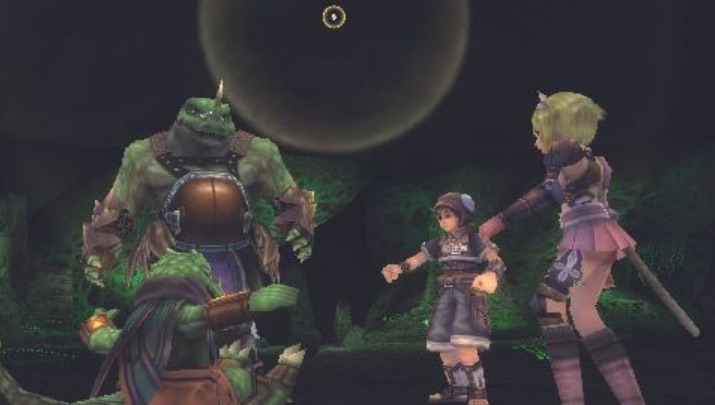
At the time of its release, Brave Story: New Traveler flew under the radar, but those who did manage to experience it would agree that it is a respectable, if a bit safe, JRPG. What elevates the experience is its art, writing, and sense of pacing. Since this was a PSP JRPG, it was doomed to be forgotten almost instantly… which it was. It also didn’t help that it was based on obscure source material.
Like most esoteric JRPGs on portable consoles, it was so well-hidden that it has managed to have a reasonable price in the second-hand market. Most loose copies are around $30-$40, and unfortunately, it never got a PSN release or port to any other platform.
PoPoLoCrois (PlayStation Portable)
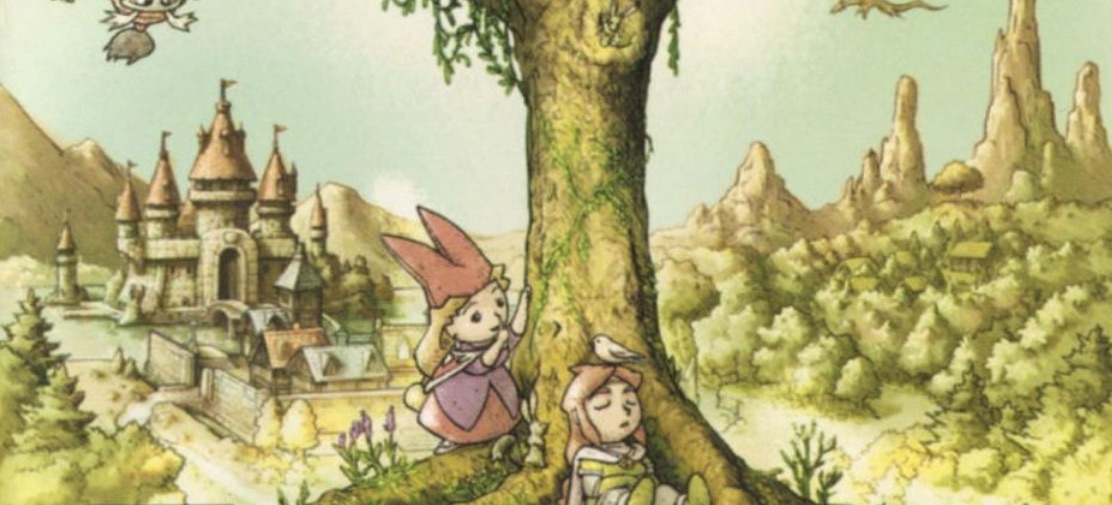
PoPoLoCrois for the PlayStation Portable is another classic example of a long-running JRPG series based on a very obscure franchise that never saw a Western release, and somehow got an entry localized. Before the 2005 PSP game, there were already about five entries spanning across the first and second PlayStations and a couple of animes.
Before the games and the anime, PoPoLoCrois began with a manga from the late 70s. The story across all the media is always about a 10-year-old Prince named Pietro who finds his dead mother, who has been in a coma, and how he goes on a quest to save her soul from the underworld. Along the way, he also finds out his mom was also a dragon and that he was half a dragon. Pietro’s dad was into some kinky stuff.
PoPoLoCrois on the PSP in the West is somewhat of a remake and condensing of the first two games that were released on PlayStation 1 and 2. This would make it an ideal entry point for newcomers since it focuses on the essence of what made this franchise appealing in the first place.
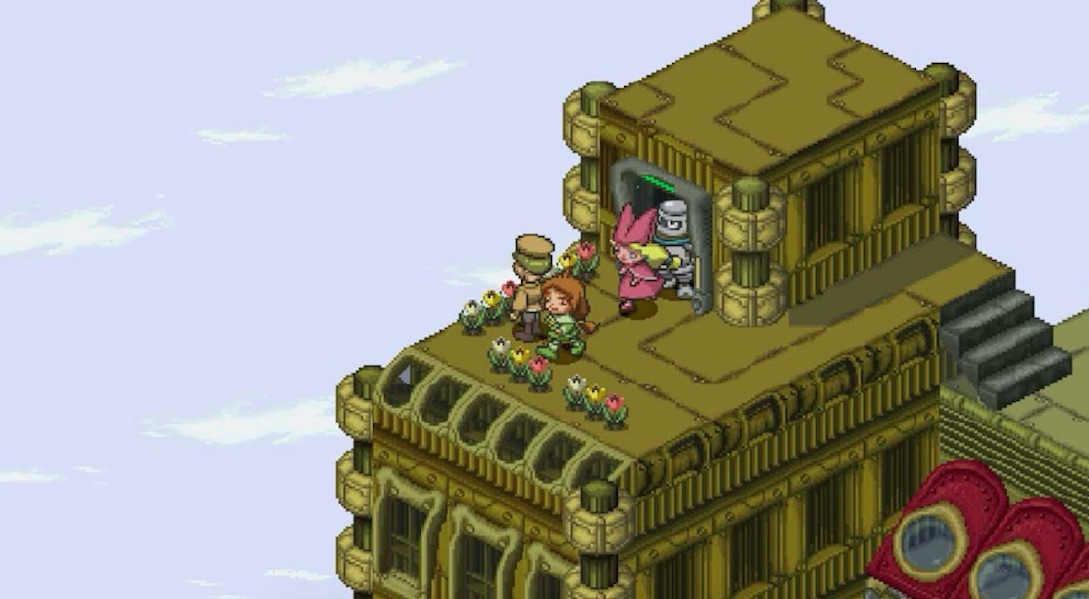
It is a combination of two games from the late 90s and it shows in PoPoLoCrois. The gameplay harkens back to the simpler days of overhead 2D JRPGs and drawn-out battles. As Pietro, players can explore a sprawling overworld, talk to NPCs, and get into sidequests like in most RPGs.
The aforementioned battles occur on the overworld map without a screen transition, but unlike most turn-based RPGs, PoPoLoCrois also incorporates a grid-based system for character placement. The mixture of gameplay elements makes the experience feel like Breath of Fire meets Final Fantasy Tactics but with cutesy children’s storybook visuals.
The battles are fun thanks to the grid-based strategy that invokes some variety. Usually, random battles in JRPGs tend to unfold the same way, but PoPoLoCrois‘ systems ensure that things won’t always play out exactly since placement is never guaranteed.
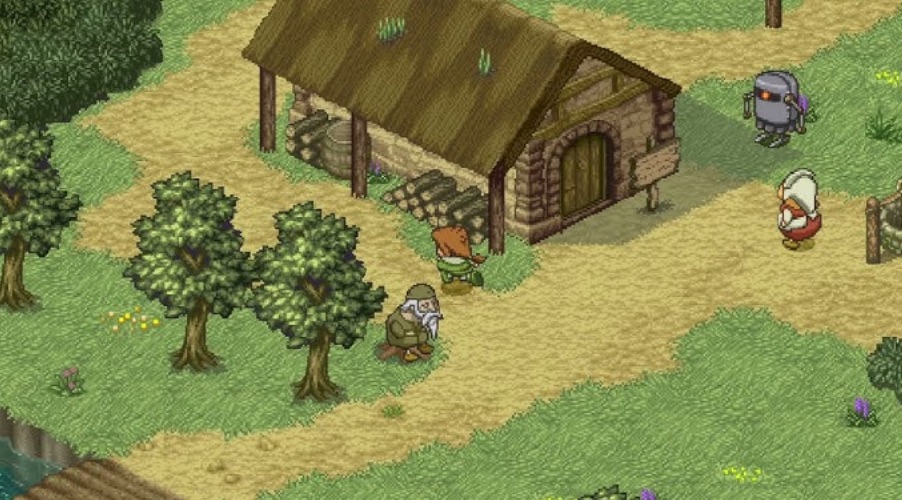
This is a beefy game due to it being two RPGs combined. Some content has been cut, but it seems like it was done for the sake of pacing. New content was added to address some of the holes, but unless you’re familiar with the originals, you may not even notice. The only real drawback is the load times. The loading in PoPoLoCrois is so frequent and lengthy that it can sour the entire experience.
Like most decent JRPGs on PSP, PoPoLoCrois was never on PSN and never got ported to any other platform. Luckily, it isn’t cost-prohibitive or rare. Copies usually range between $30 to $40 and aren’t hard to come by.
Crimson Gem Saga (PlayStation Portable)
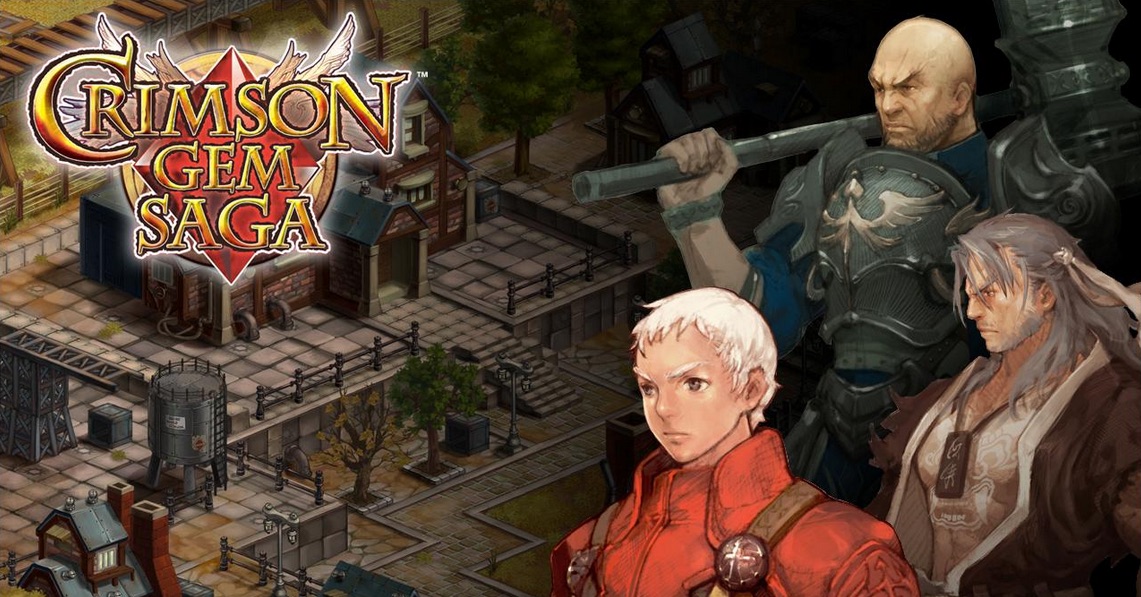
Crimson Gem Saga was originally known as Astonishia Story 2 in its native South Korea, this game bore little resemblance to its predecessor, prompting a rebranding for its North American release as Crimson Gem Saga and Garnet Chronicle for its Japanese audience. Not that it helped it gain traction since it was swiftly forgotten along with most exclusive PSP RPGs.
Meet Killian von Rohcoff, a recent Chevalier graduate from the prestigious Green Hill Academy, ready to embark on a thrilling adventure to prove his worth. Reluctantly, he joins forces with the seasoned treasure hunter Spinel, setting the stage for an enthralling journey filled with intrigue and conflict.
Together, they become entangled in a high-stakes plot between rival factions, all vying to harness the power of mystical gemstones. Along the way, they assemble a diverse party of charming and quirky allies, adding depth and excitement to their quest.
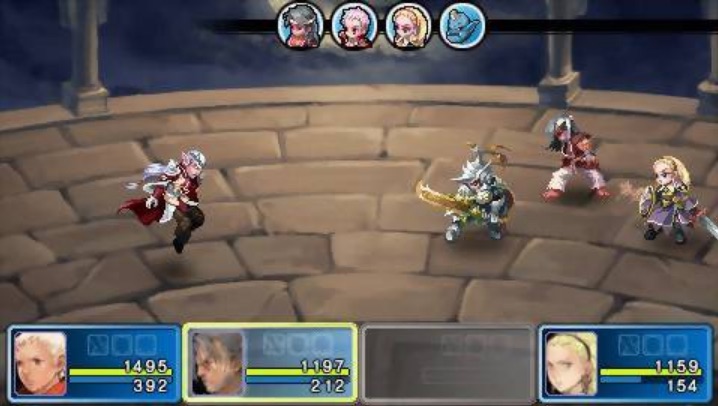
Crimson Gem Saga is a tribute to the cherished conventions of old-school RPGs. With a genuine affection for the genre, the game not only respects these time-honored traditions but also slyly winks at them as players progress through its enchanting storyline. It’s an adventure that both honors the roots of classic role-playing games and infuses a sense of nostalgia and humor into the adventure.
The gameplay is as standard turn-based JRPG as can be. There is nothing wrong with it, but it also is as safe and plain as any Dragon Quest. The only notable quirk is that Killian, the protagonist, is not a required party member for battle and can be switched out.
The only thing that makes Crimson Gem Saga different from something like Brave Story is that it’s a bit edgier and Killian is a bit of a callous jerk compared to the good-natured Tatsuya. While both games do have beautiful presentations, Crimson Gem Saga goes for 2D pixel art over 3D models. The 2D illustrative visuals have made it seem more timeless since its release in 2009.
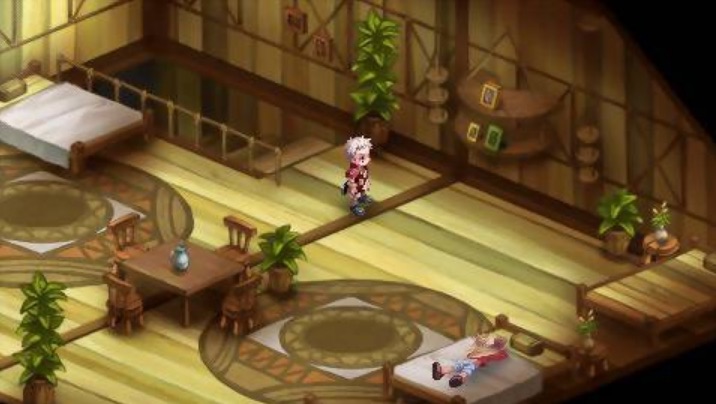
The appeal of Crimson Gem Saga lies in its traditional gameplay and self-aware writing. It doesn’t reinvent the wheel, but there is comfort in playing it safe because you know what you’re going to get. It is a very linear JRPG and it’s got many moments where players are forced past a point of no return as the story progresses, so it’s worth taking your time when playing it.
Like the other two PSP JRPGs in this feature, Crimson Gem Saga was never put on PSN and never ported to other consoles or PCs. There was an iOS version, but it has since become outdated with modern operating systems and has become unplayable. Prices for physical copies of Crimson Gem Saga are on the steep side, reaching around $100, making it cost-prohibitive.
How was that for 20 obscure JRPGs? While it is true not all of these fall into the strict definition of what most consider a ‘Japanese’ RPG, they do aspire to cater to fans of the genre. There are many more out there that go beyond the scope of this already exhaustive feature.
Fascinating and playful little gems like Wrinkle River Story, Dark Savior, Dual Orb 2, and both Evolution games are worth looking into. Know about other obscure and mysterious JRPGs that we missed? Leave a comment below and tell us about it!